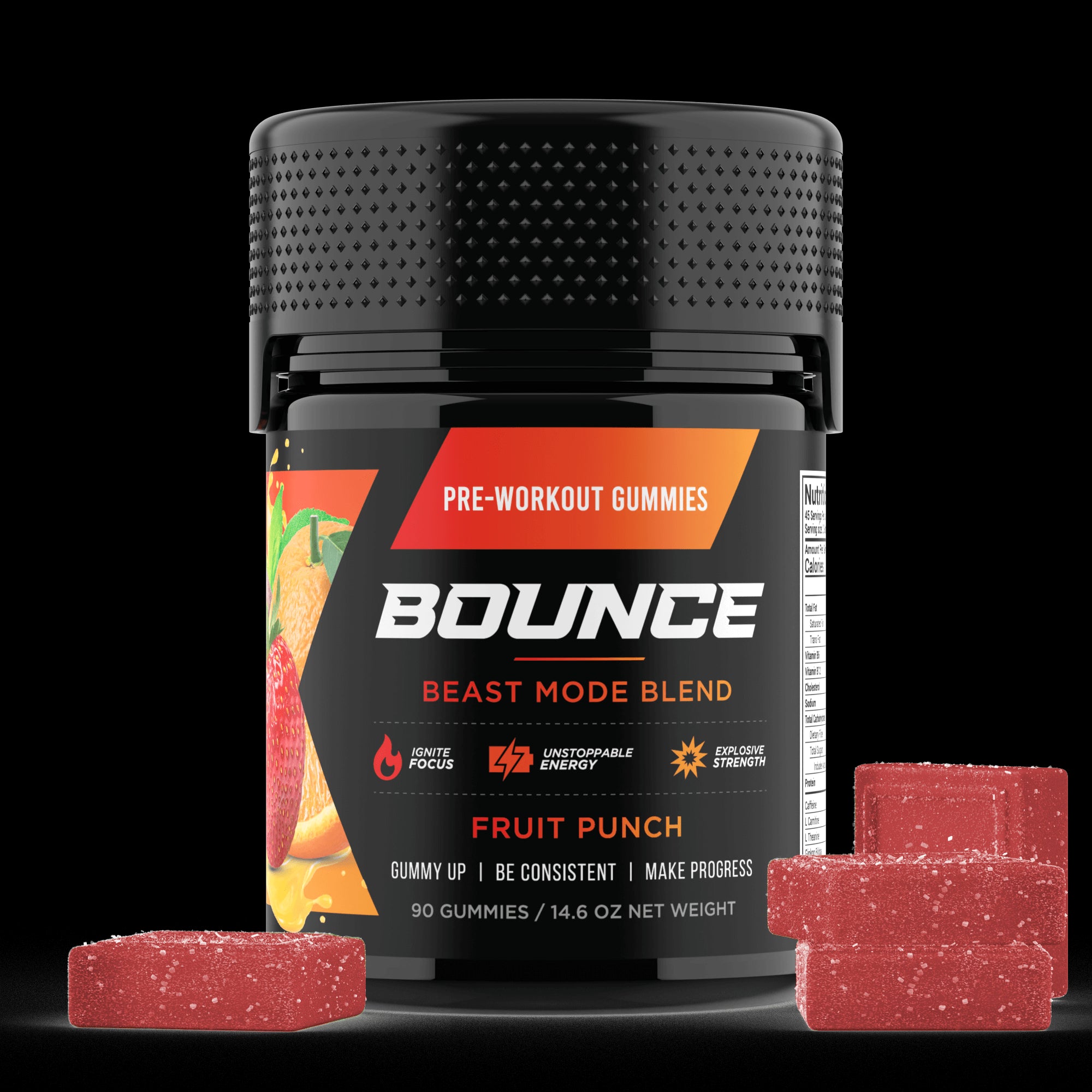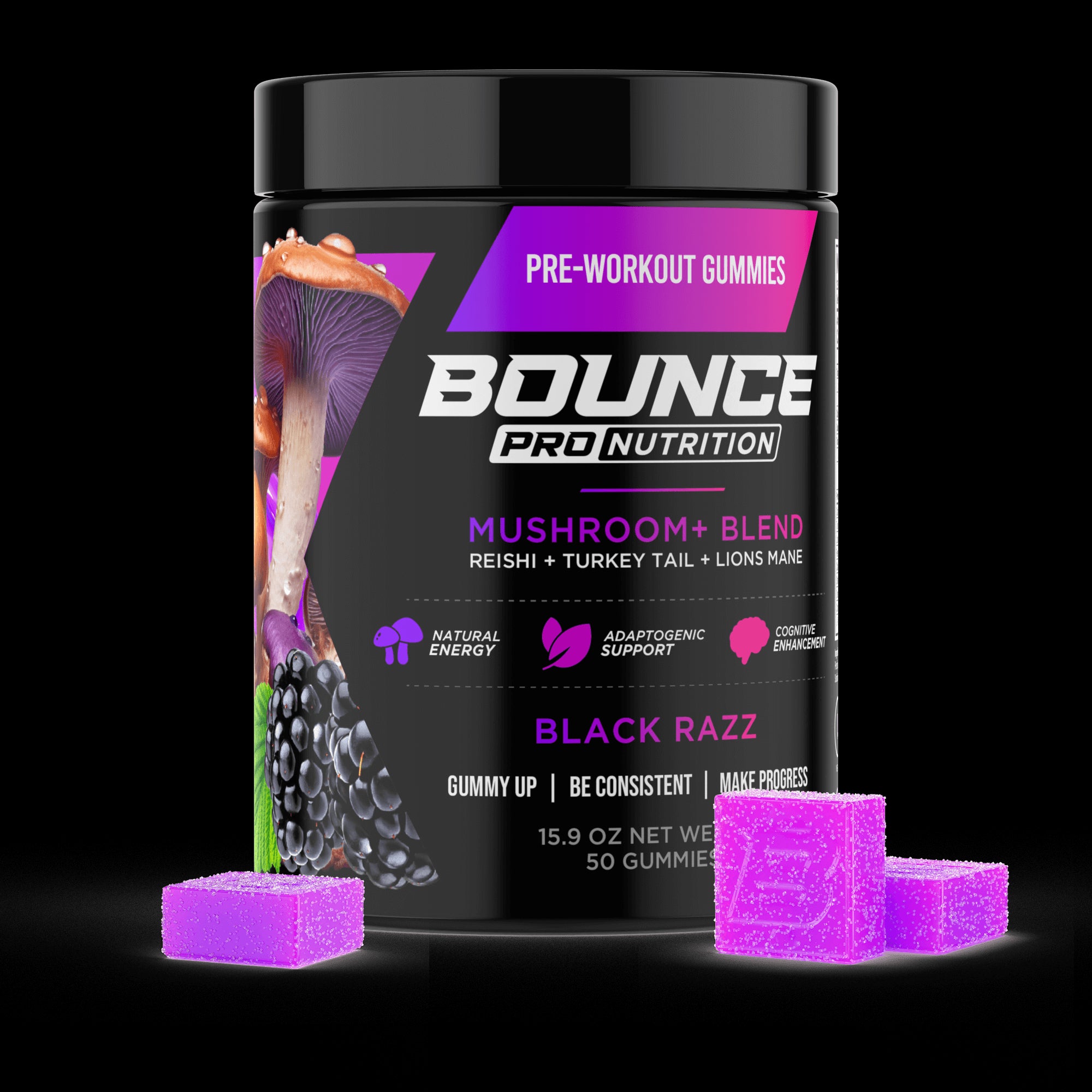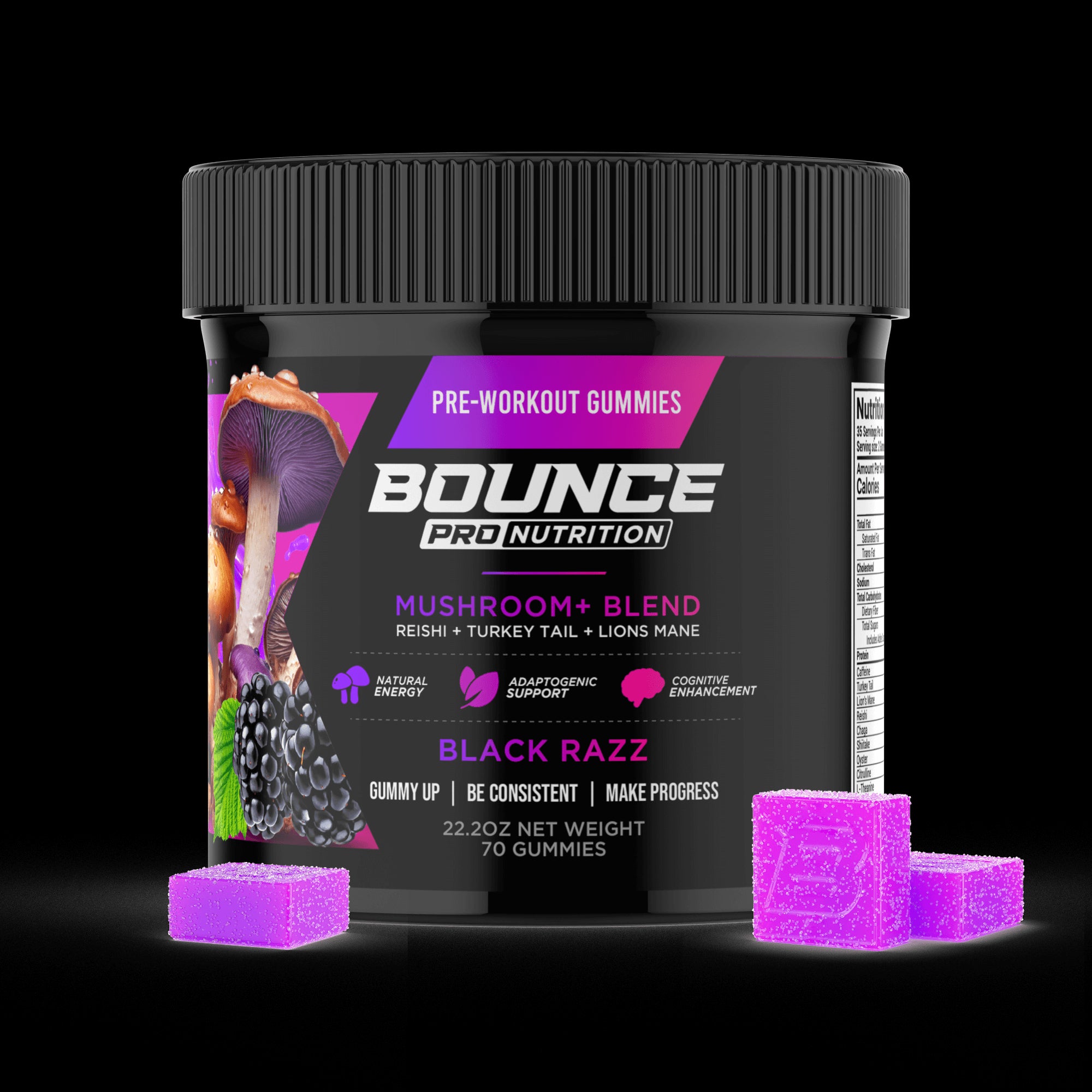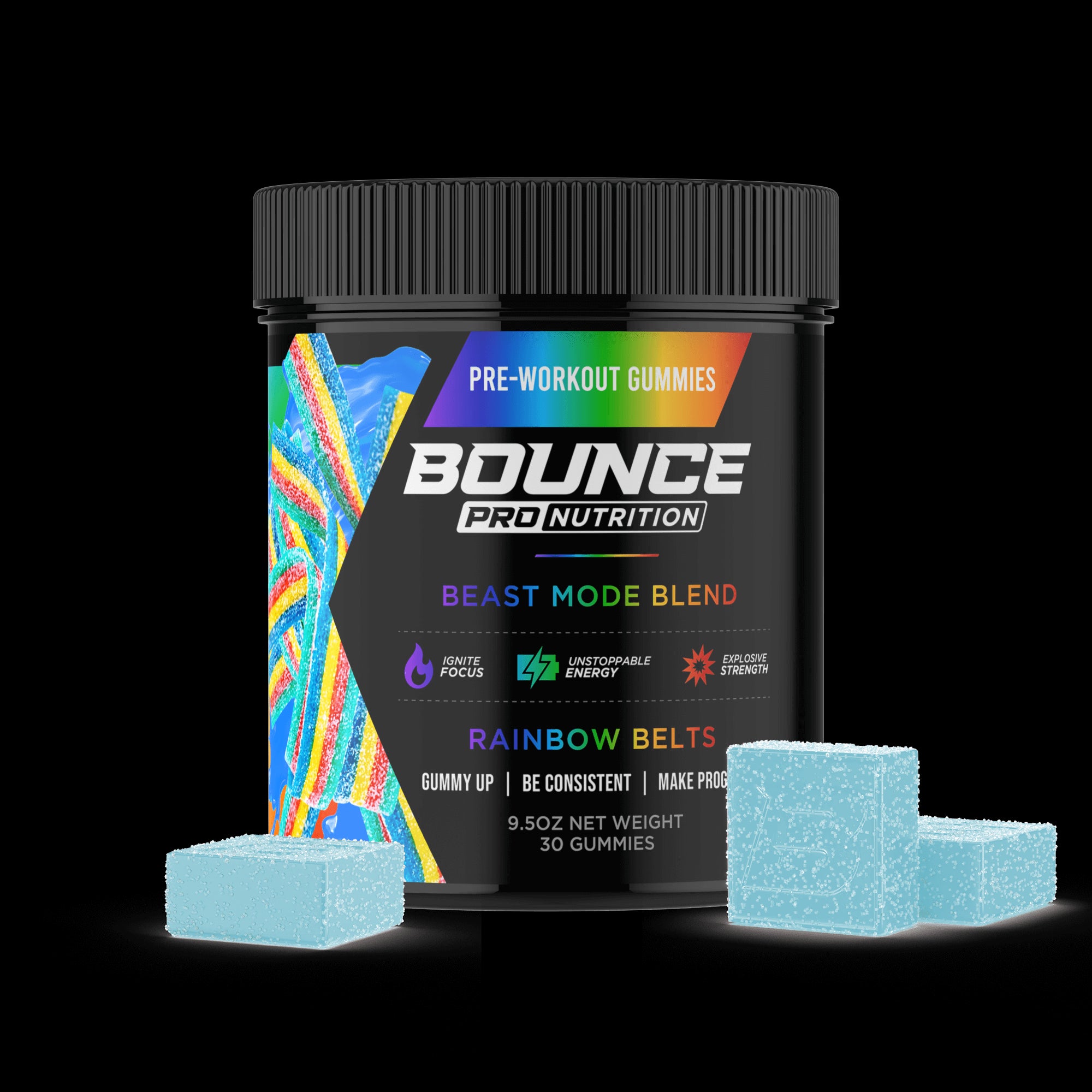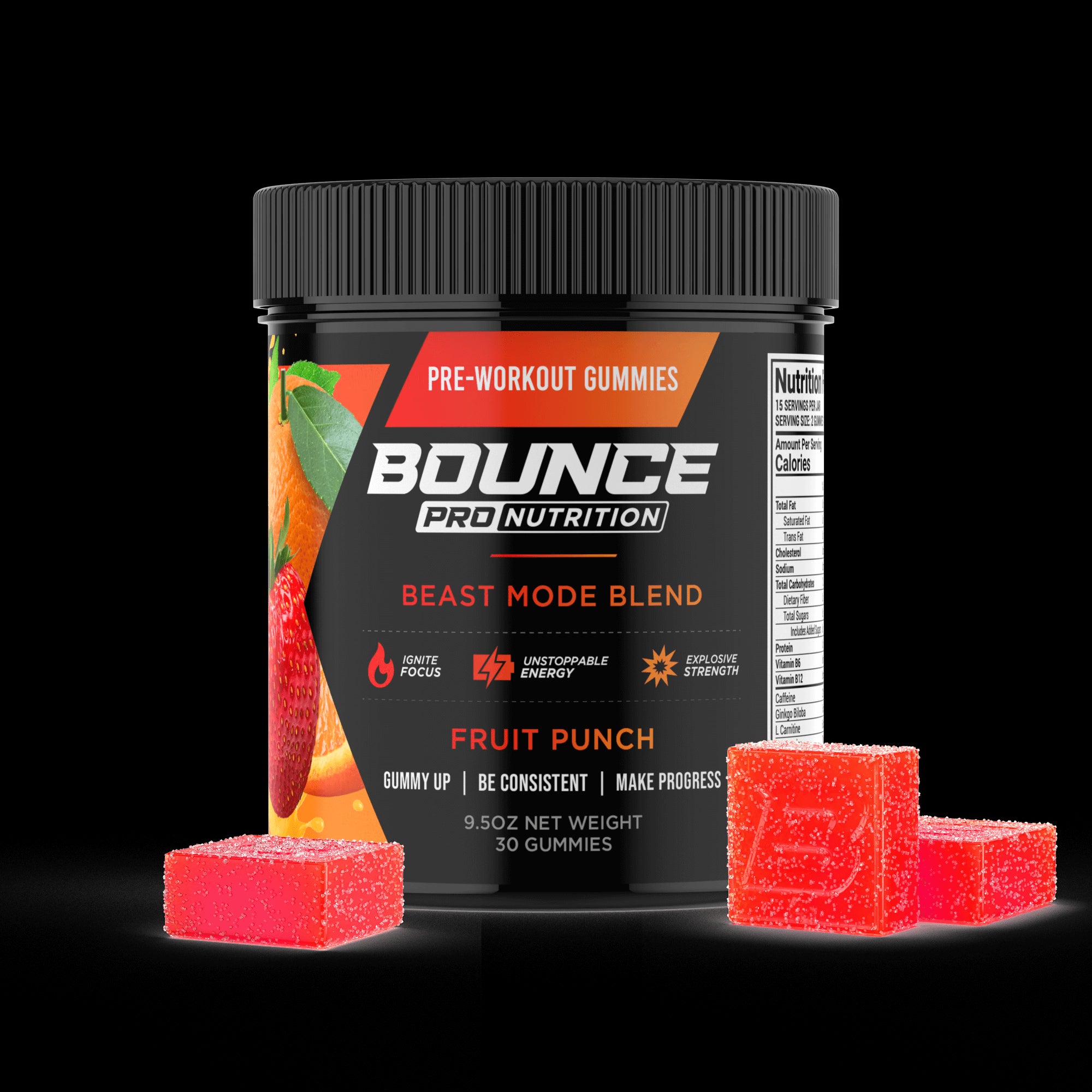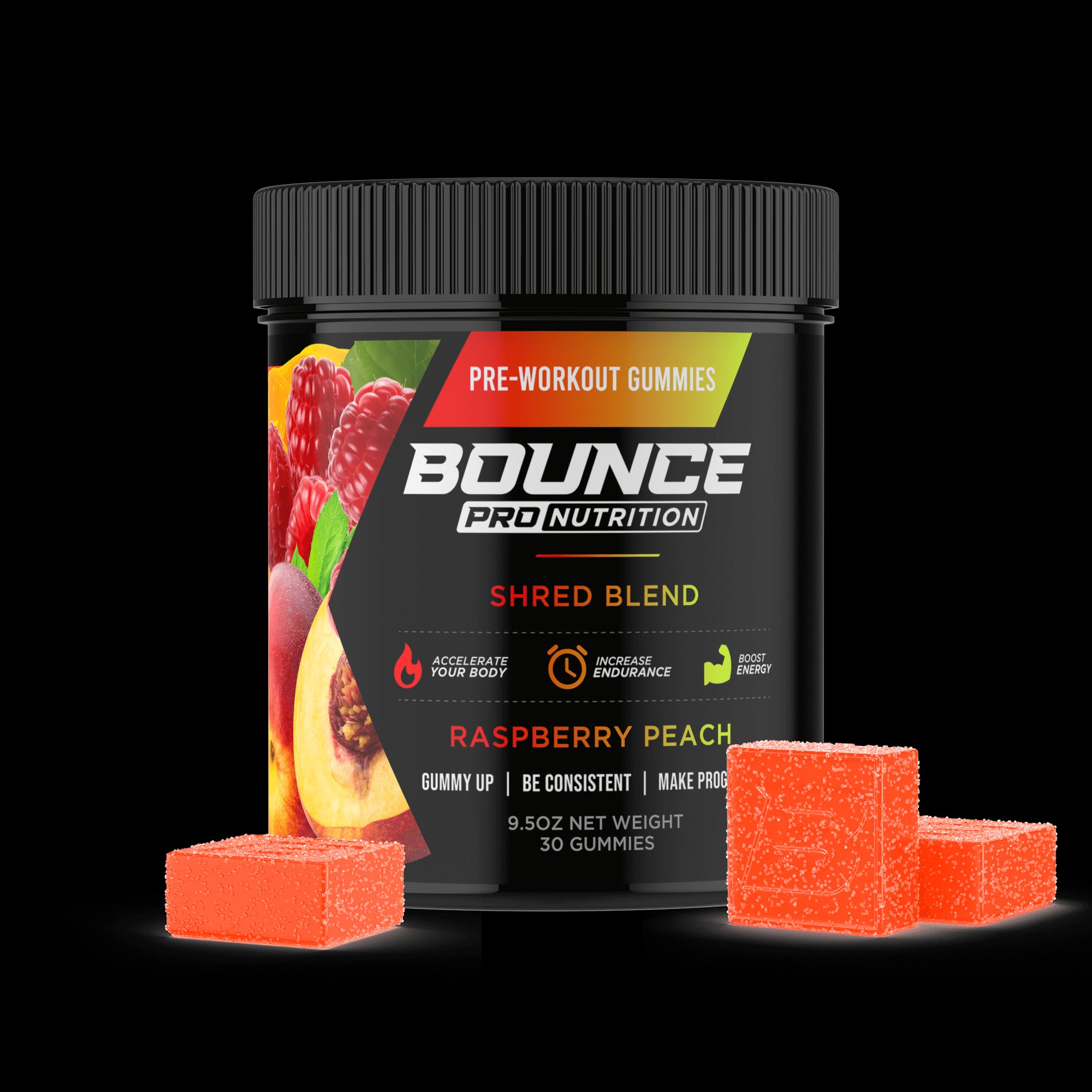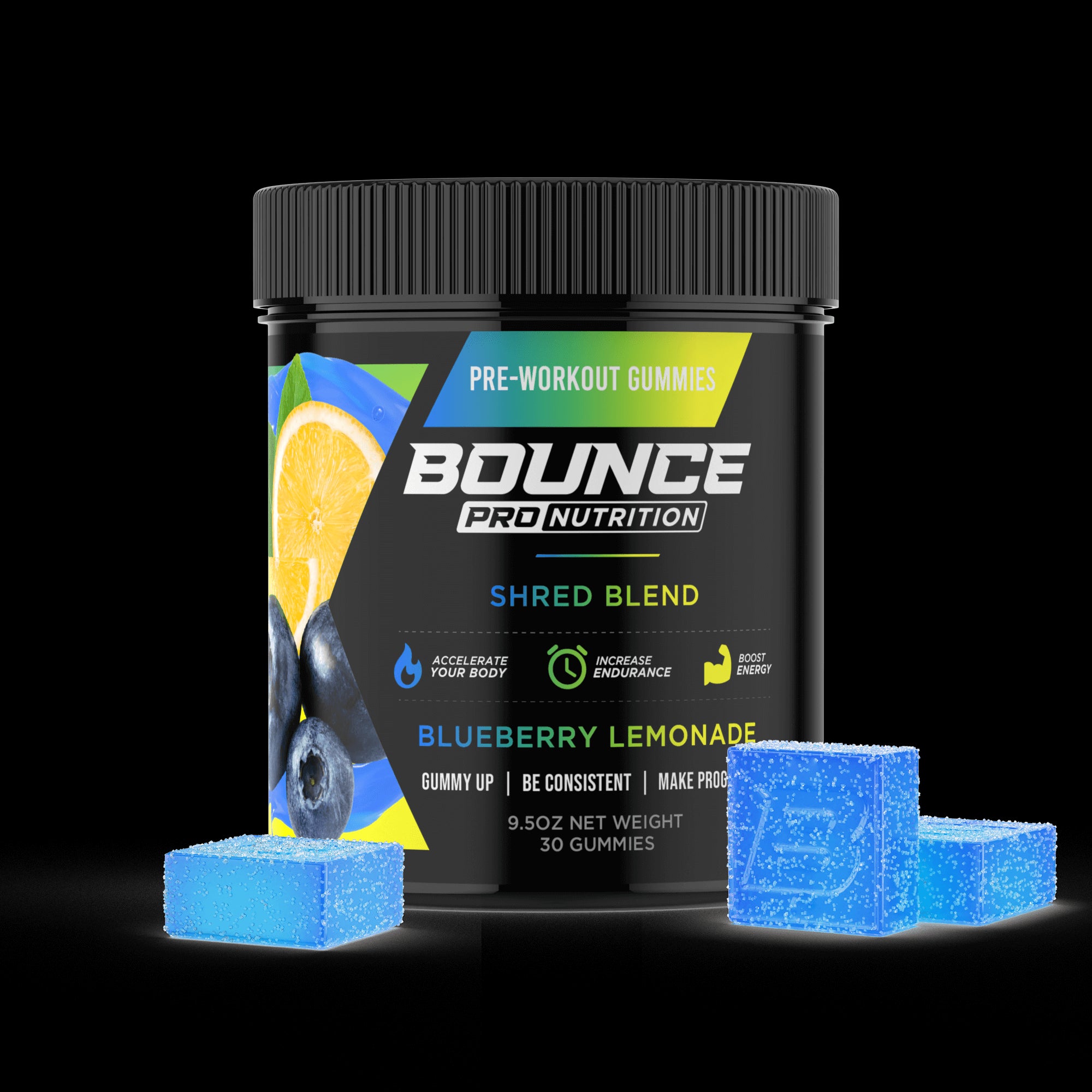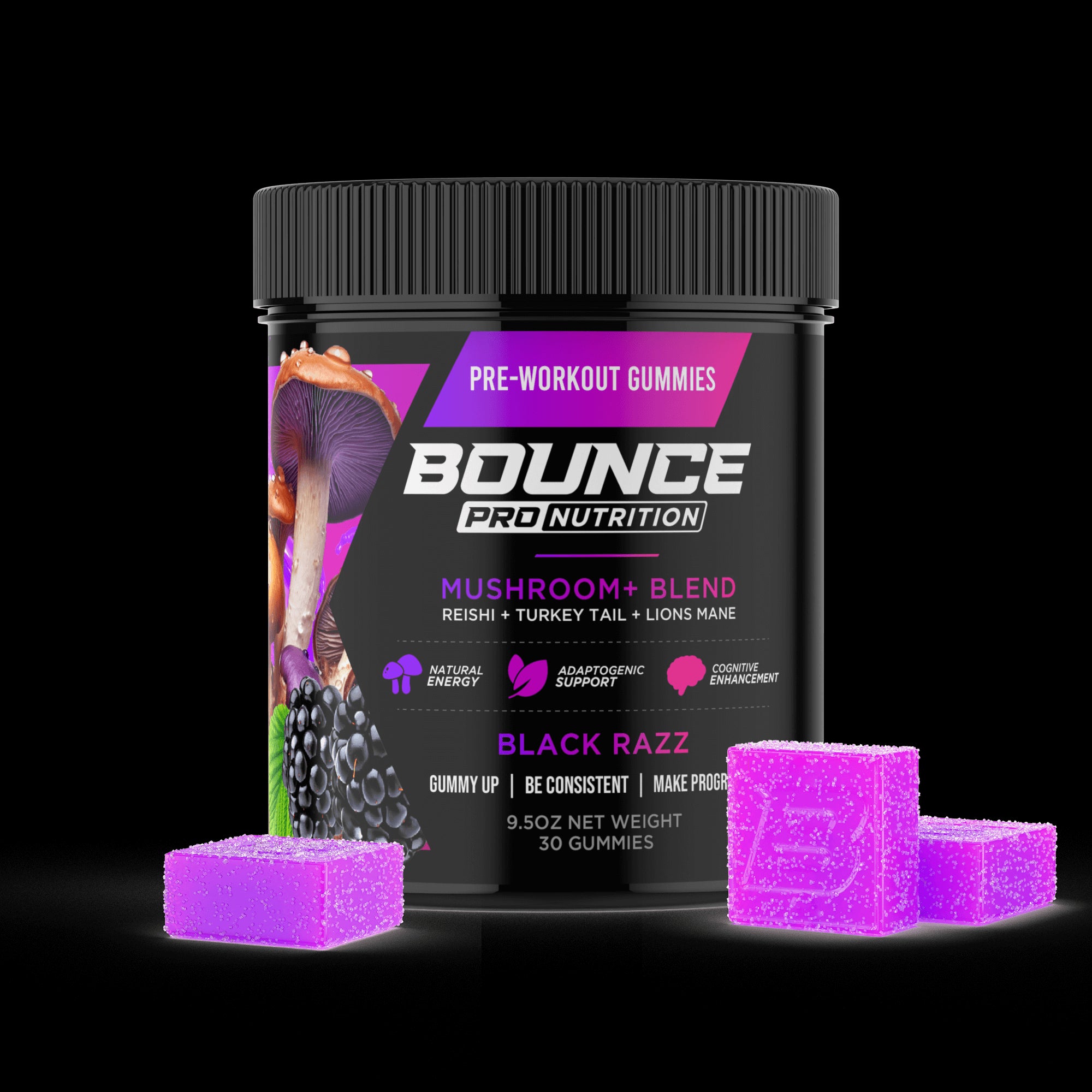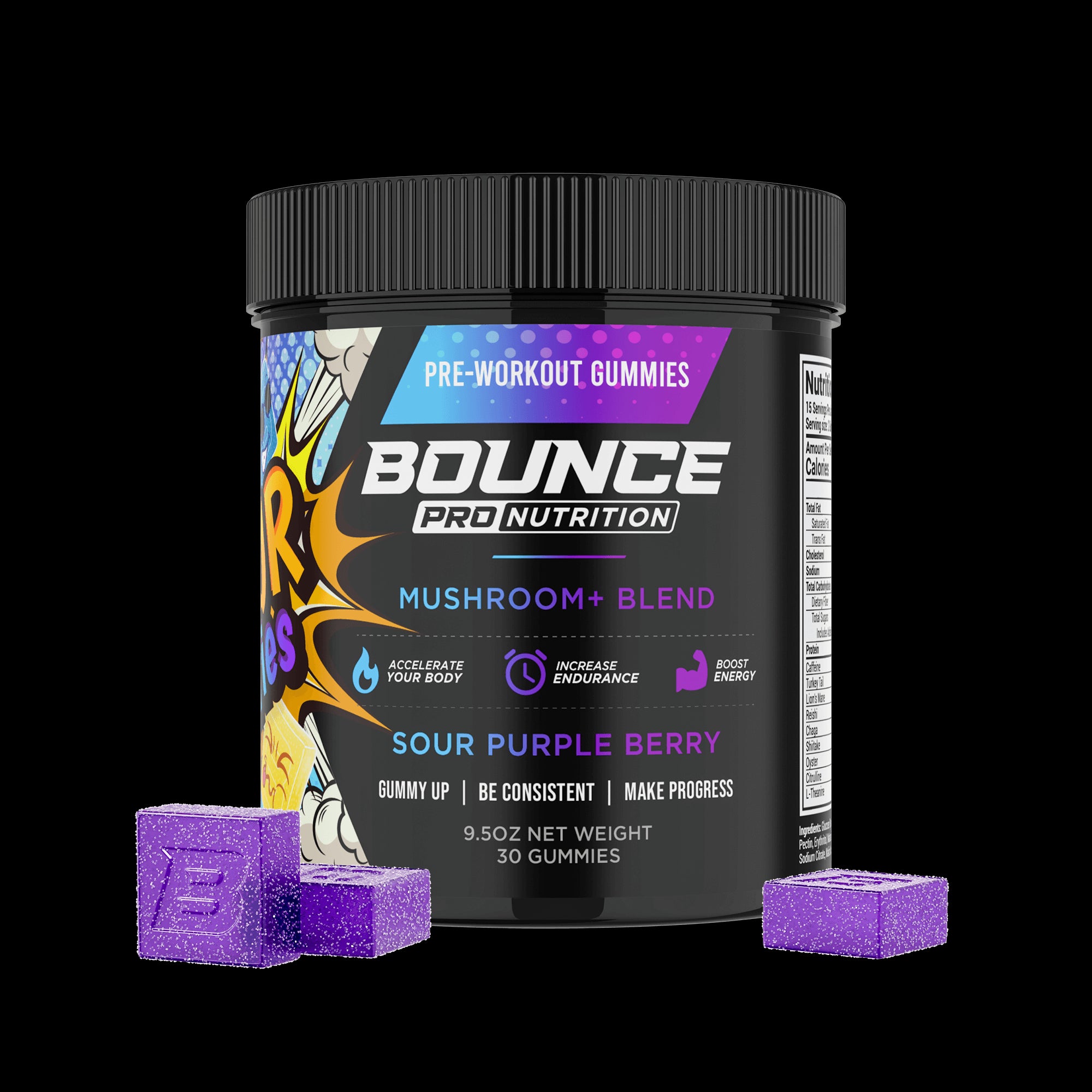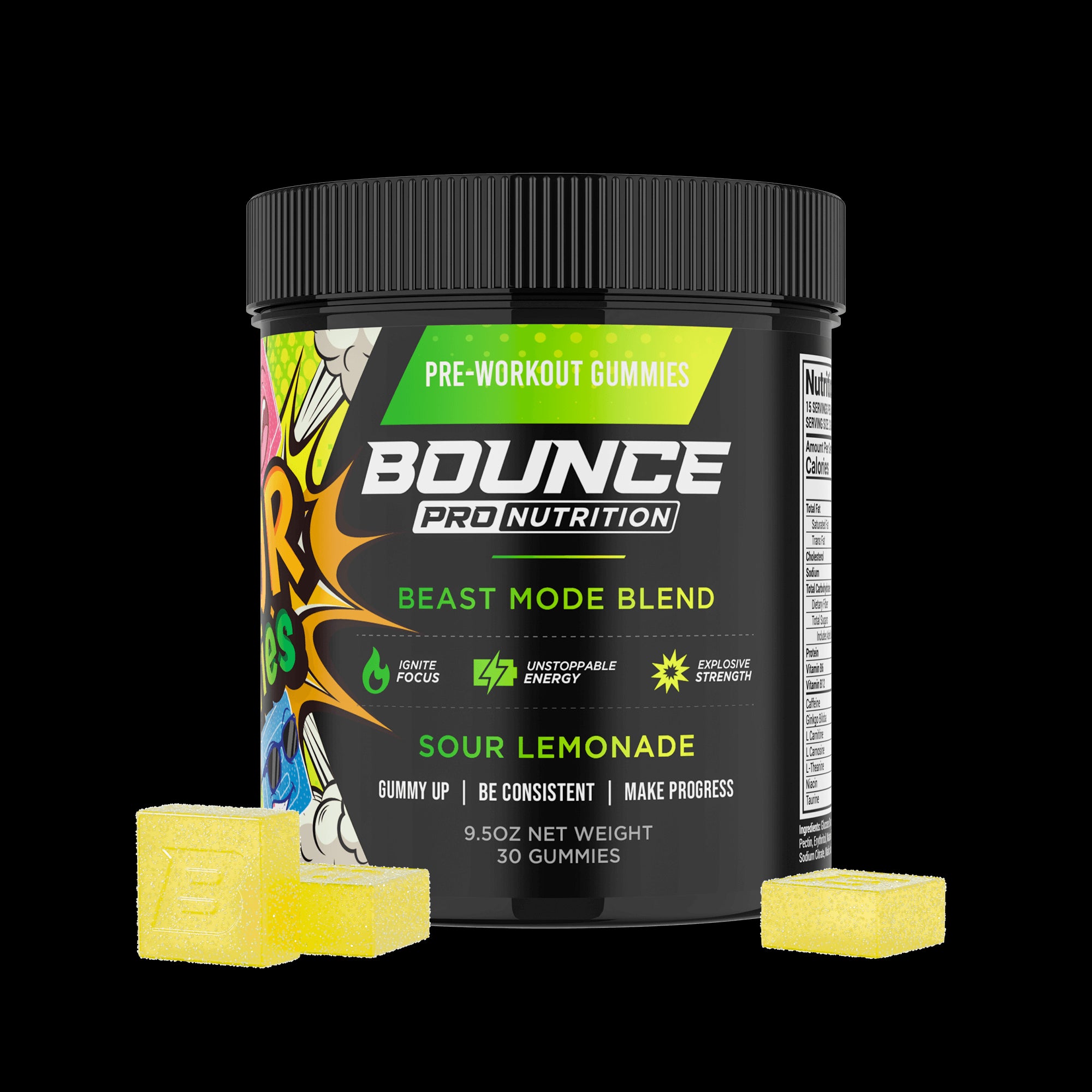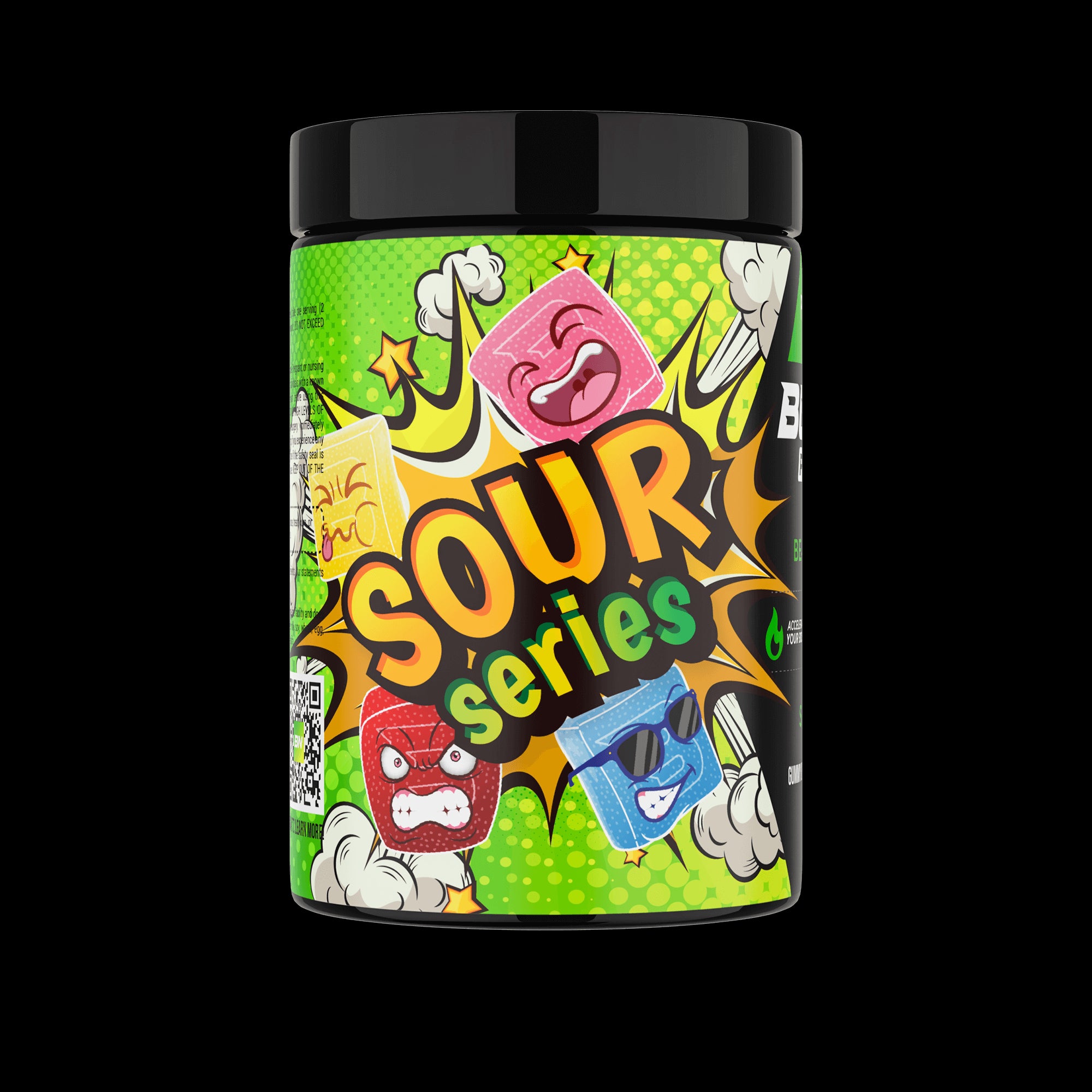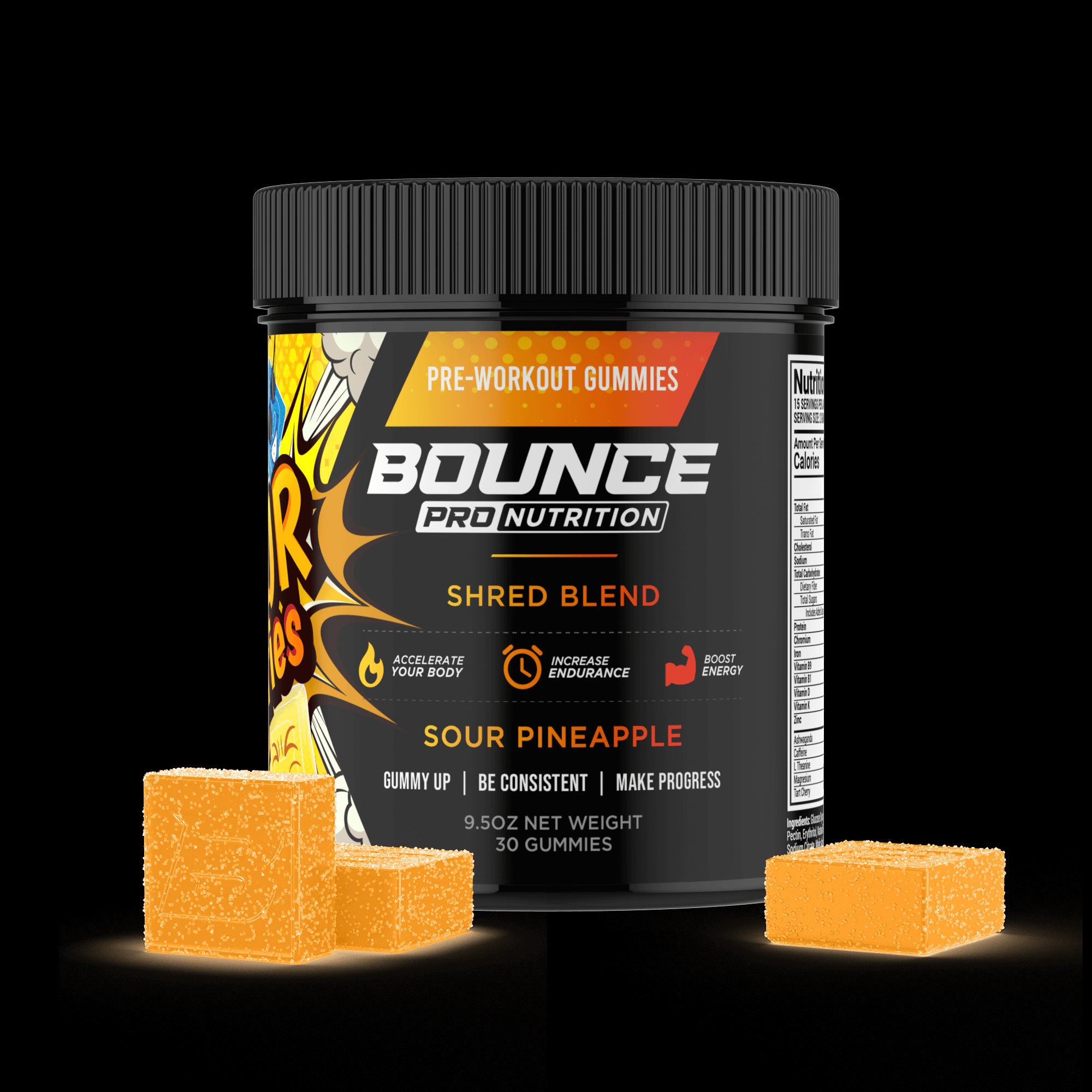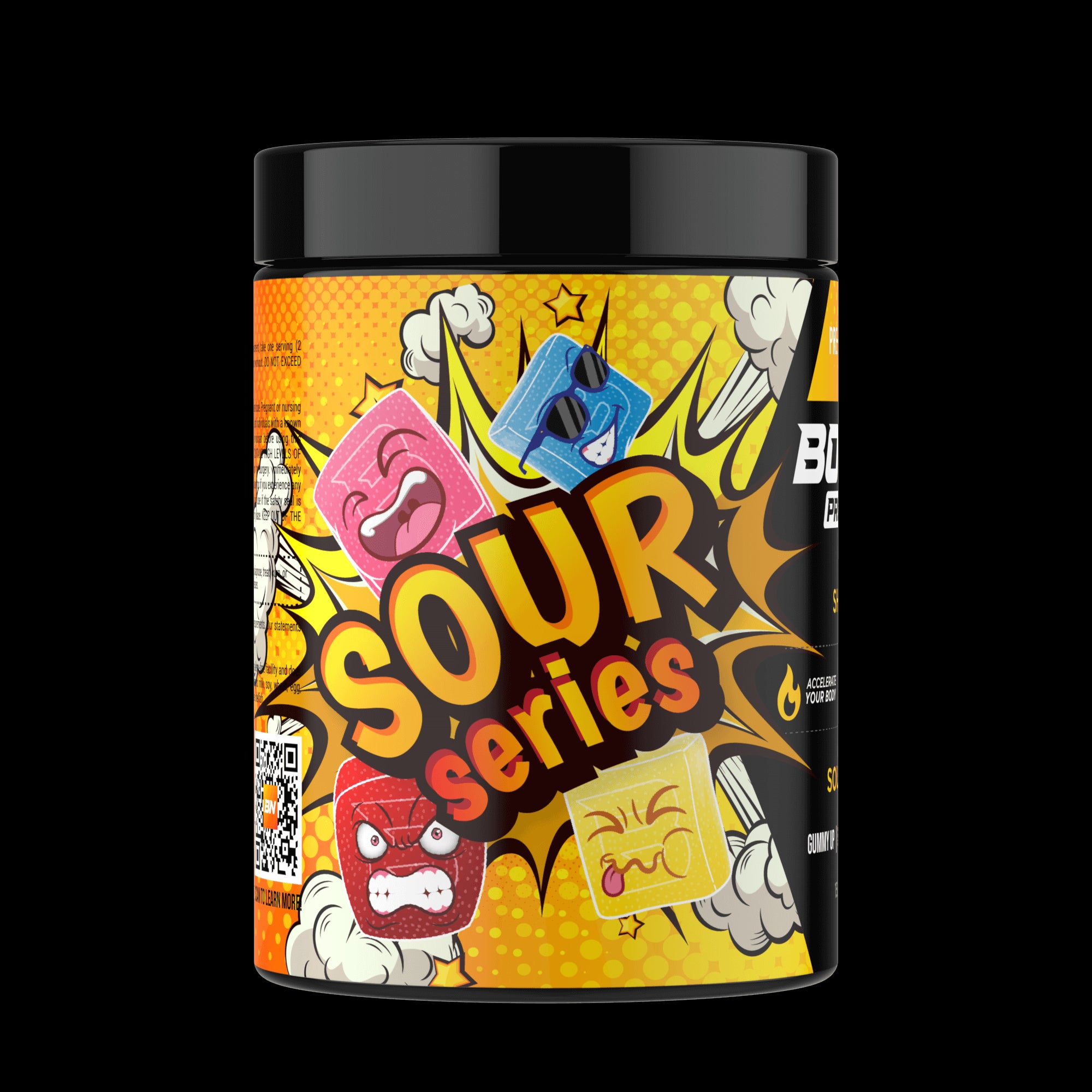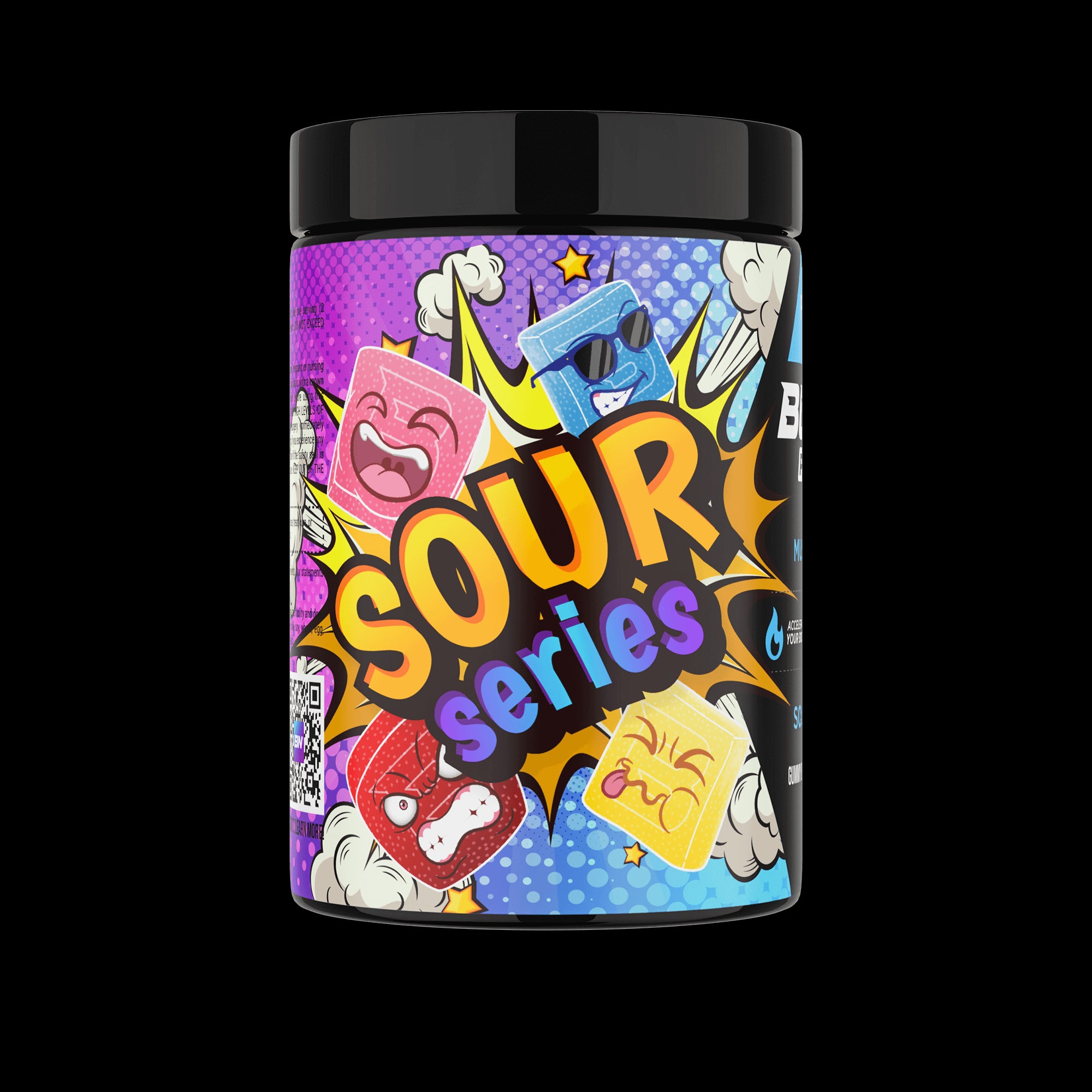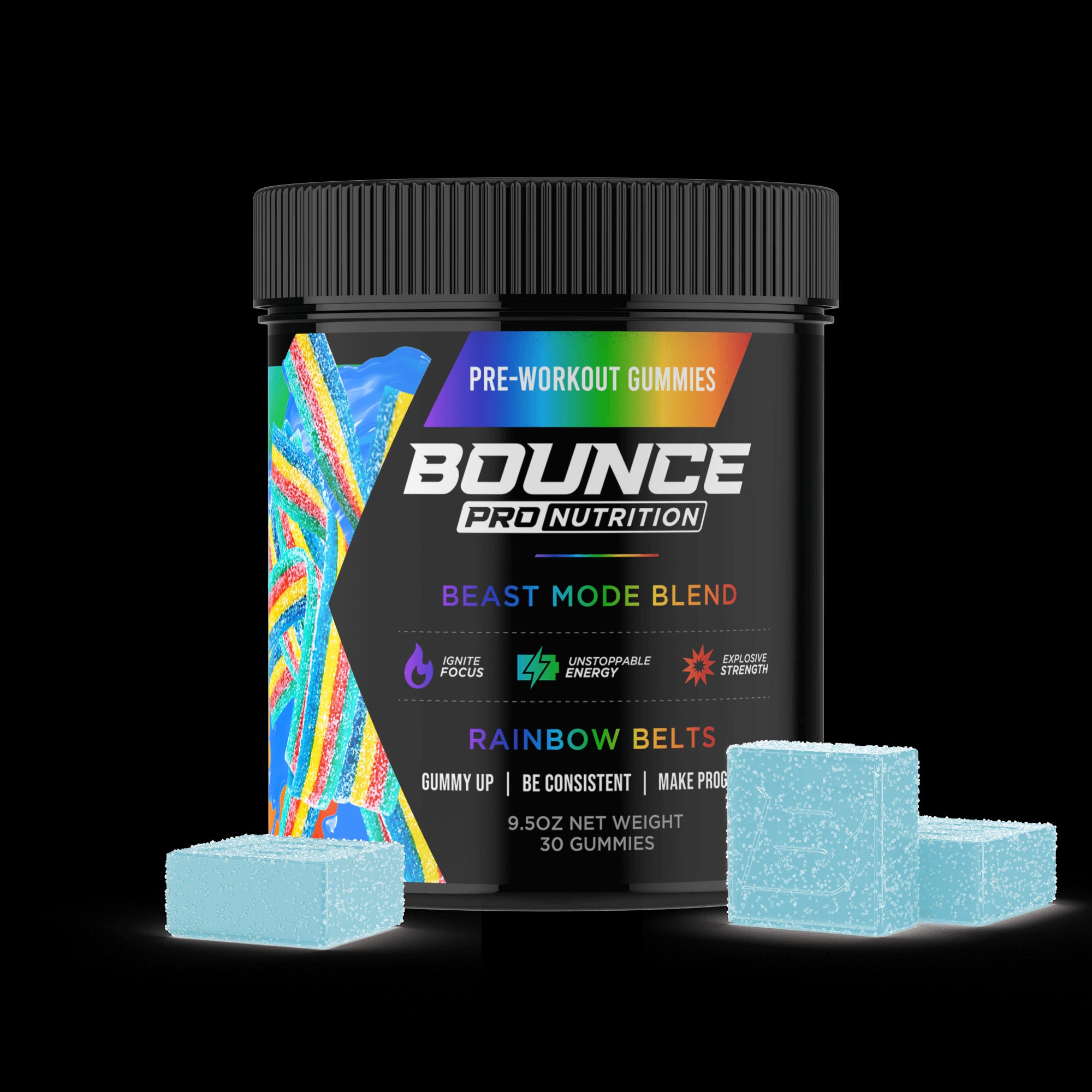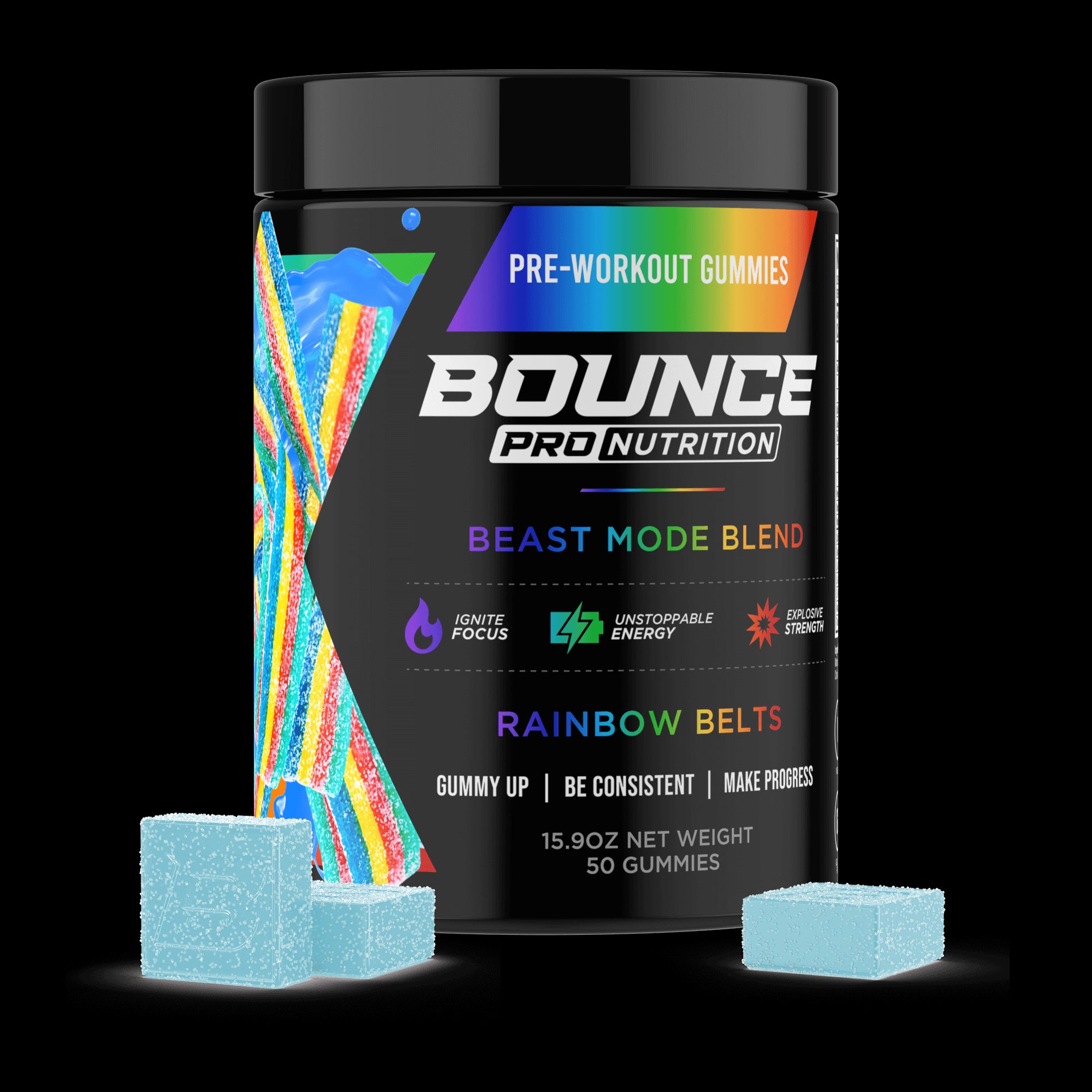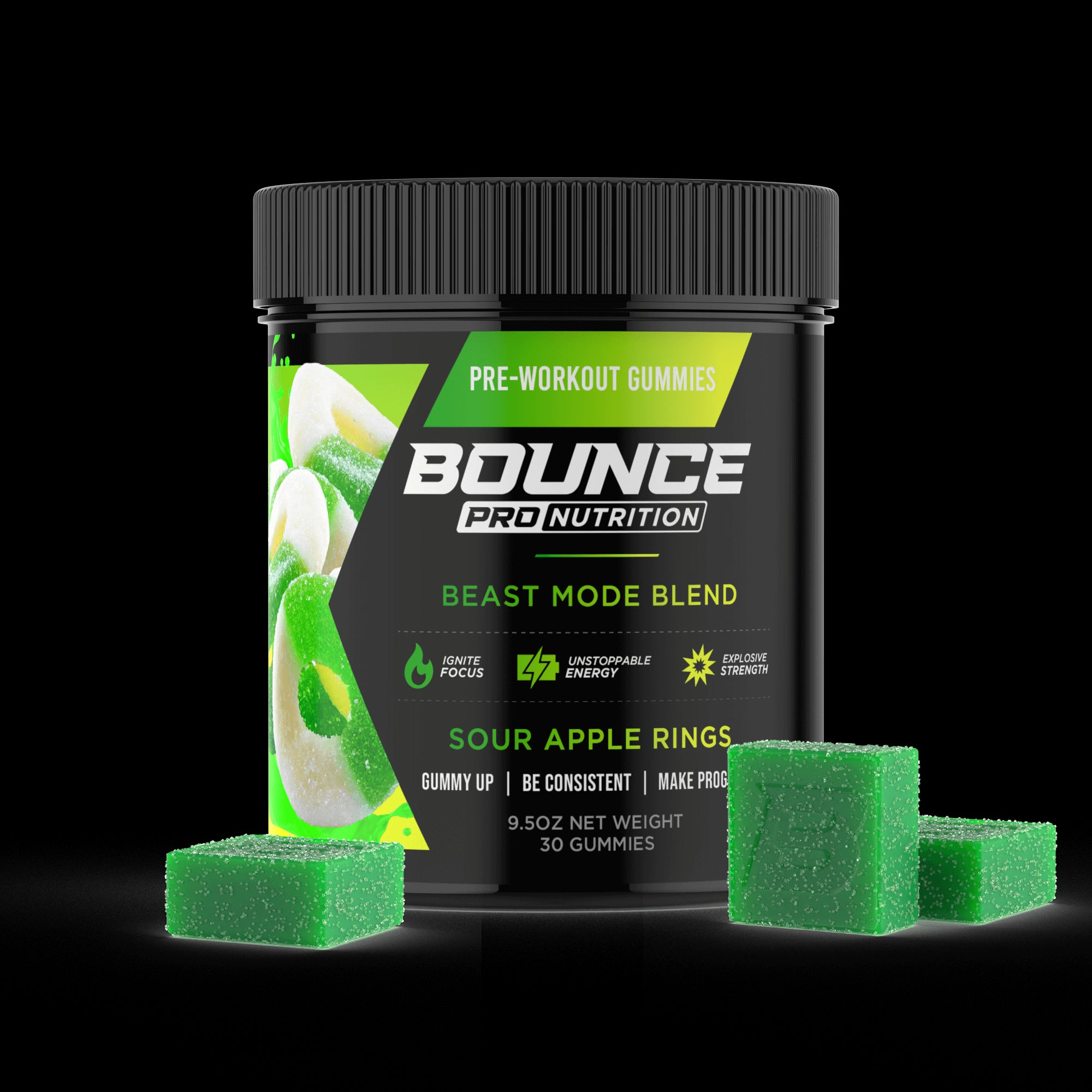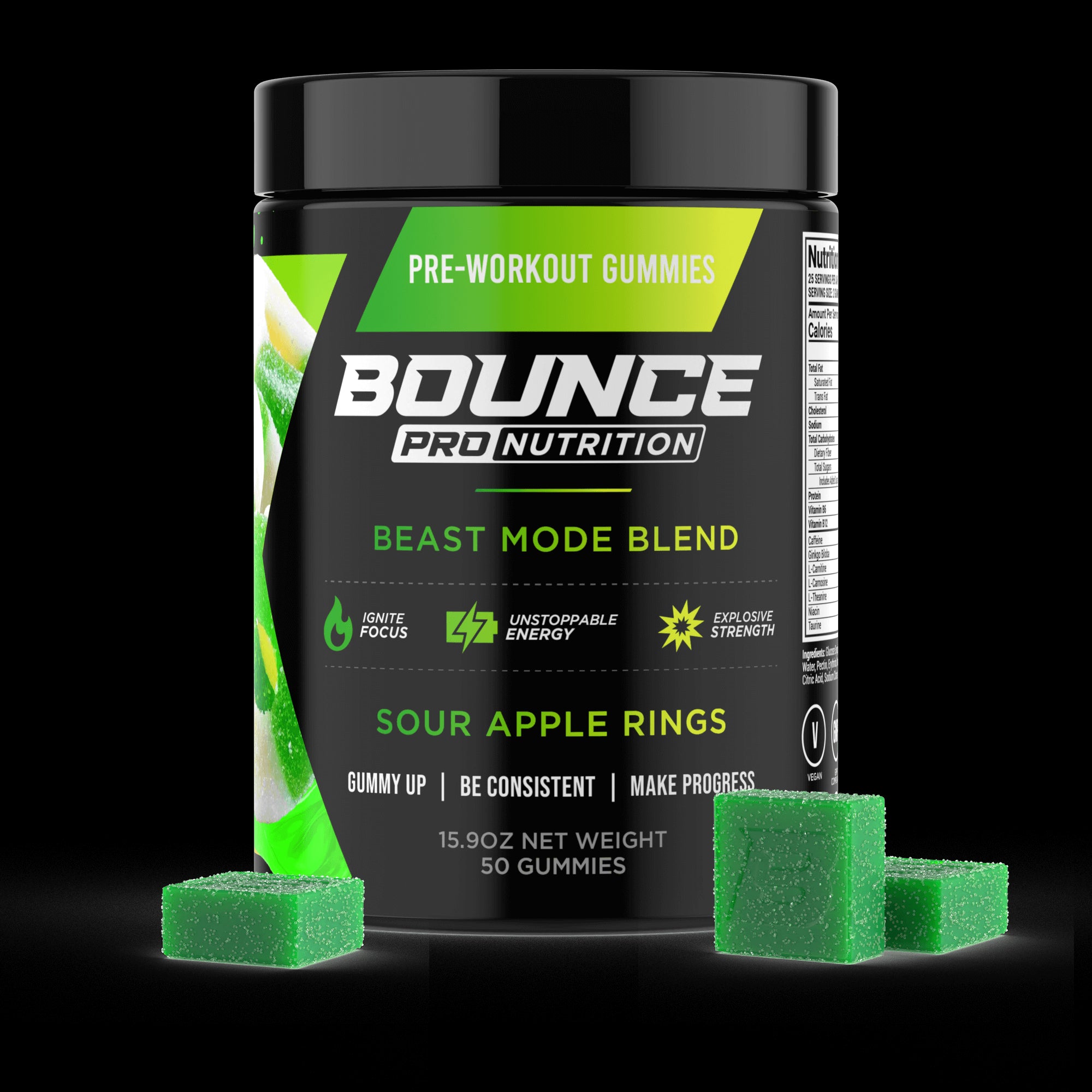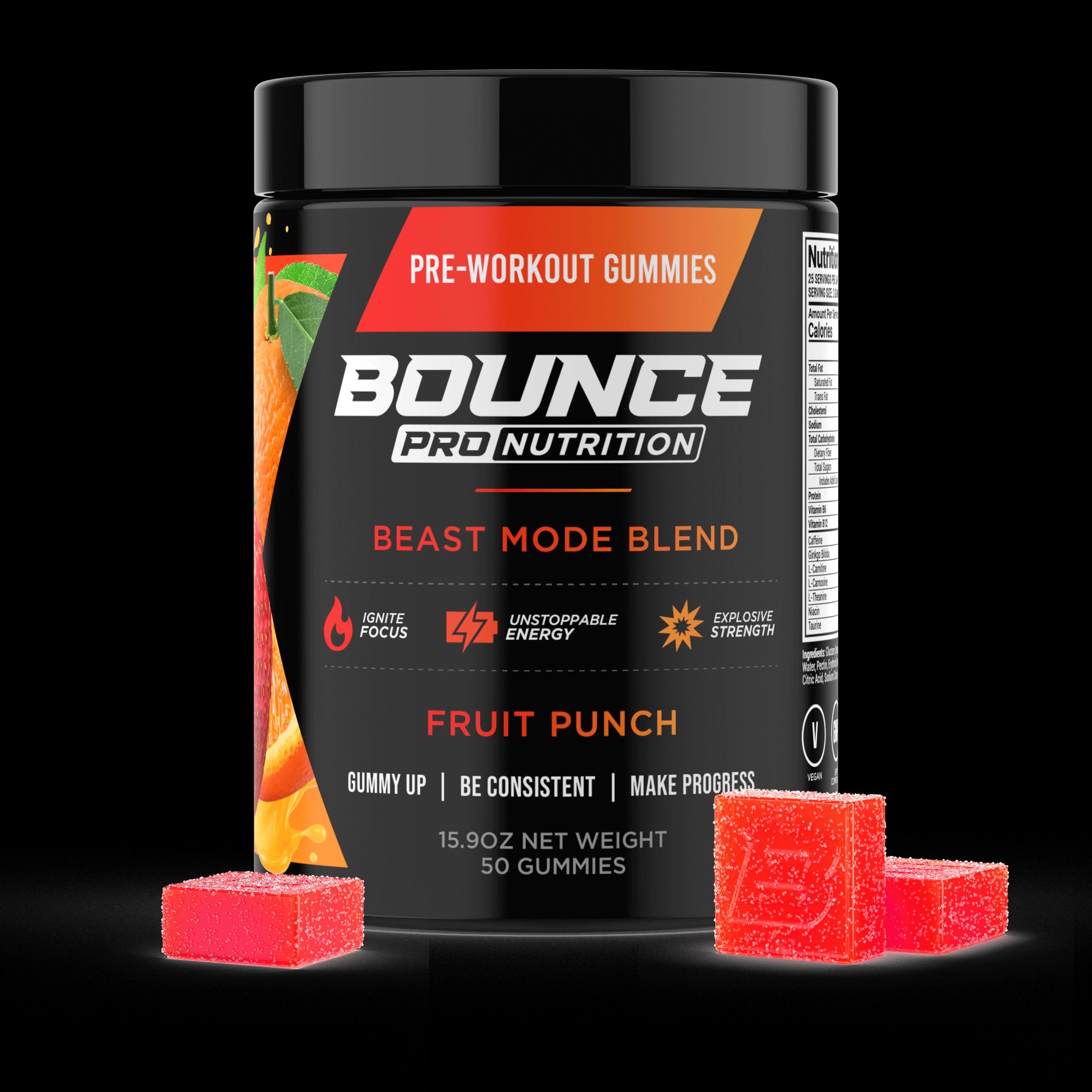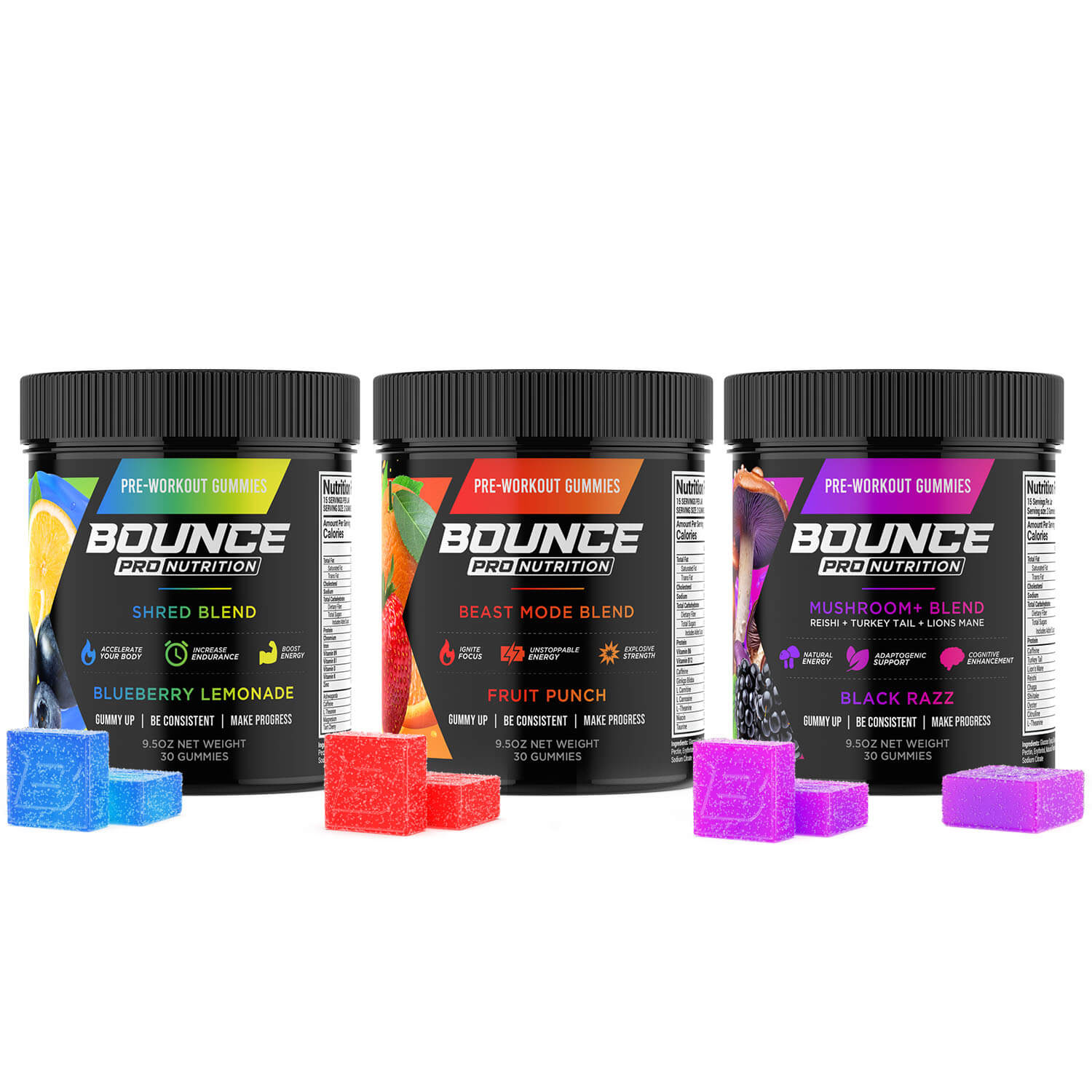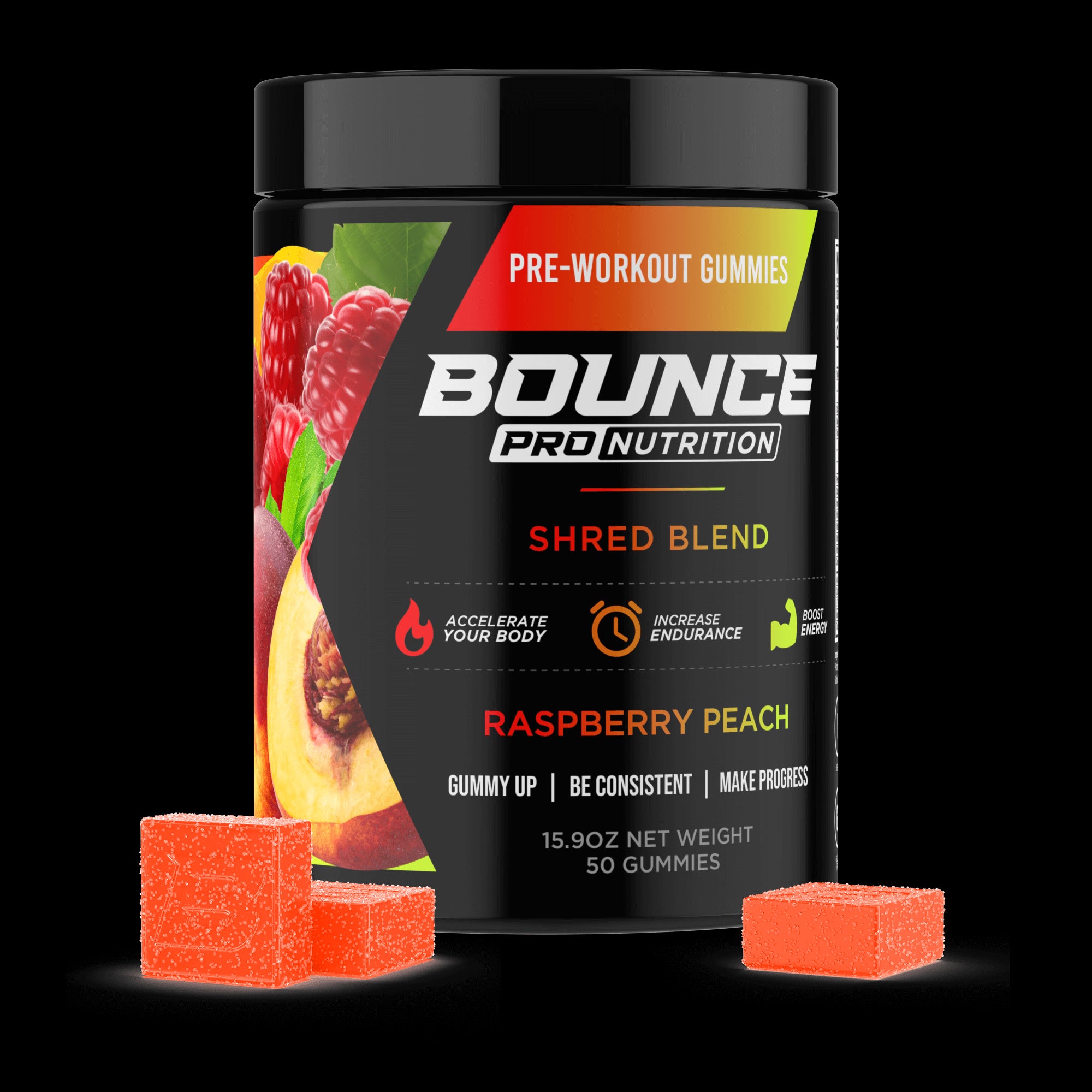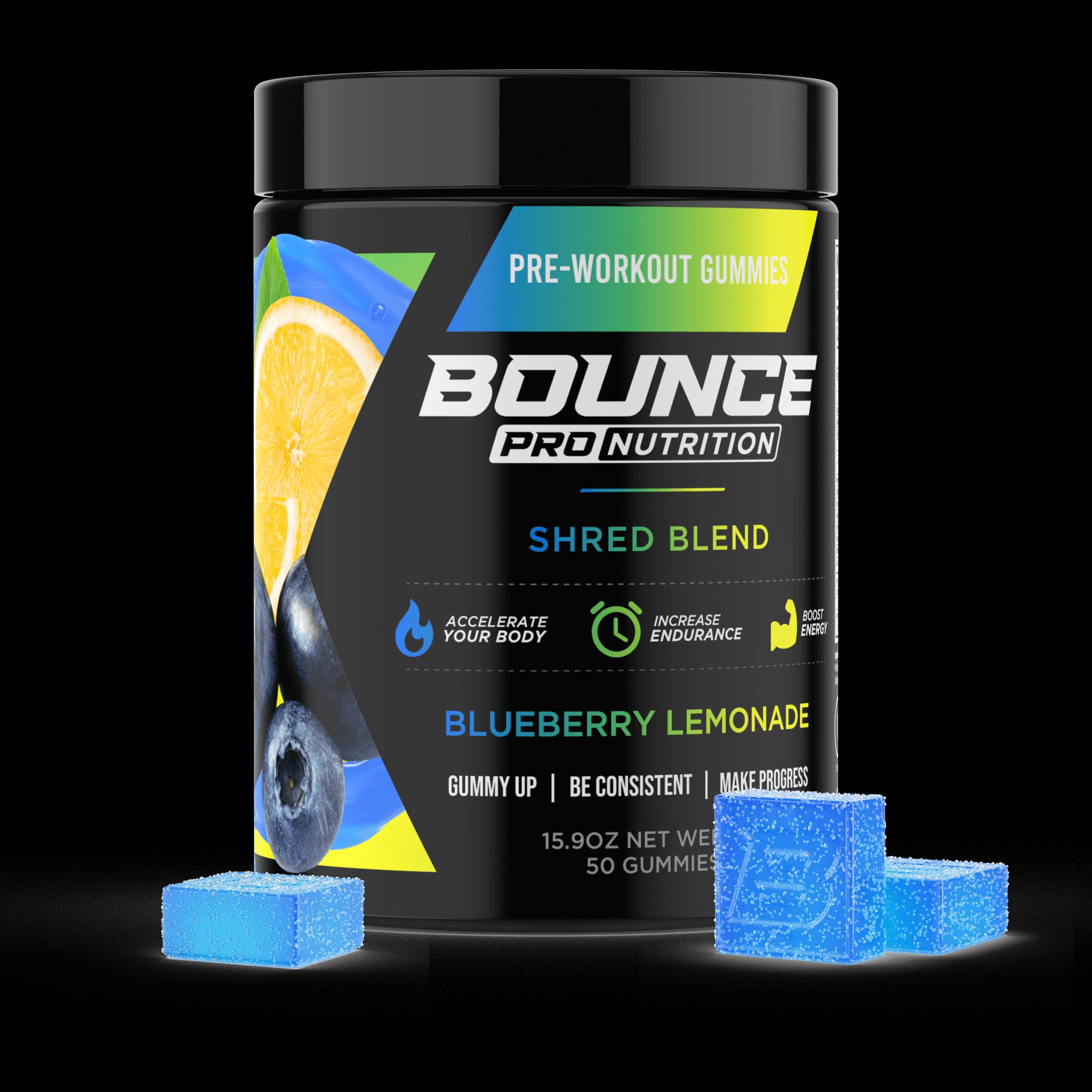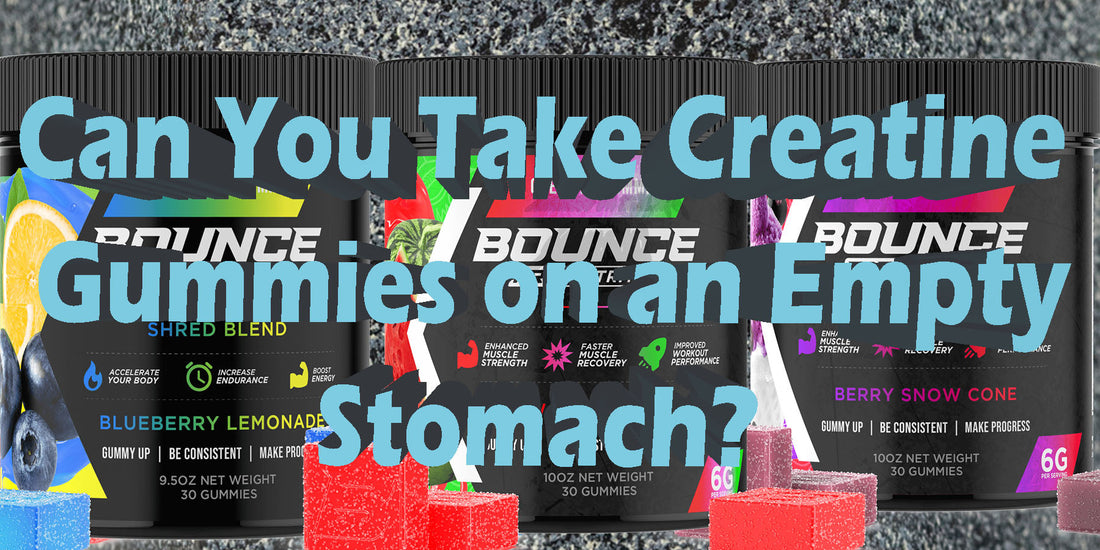In the disciplined world of fitness and supplementation, routines are everything. We meticulously plan our workouts, our meals, and the timing of our supplements, all in the pursuit of optimal results. For years, creatine, the undisputed king of strength and performance supplements, has been a staple in this ritual, traditionally mixed as a powder into a post-workout shake. But now, with the arrival of convenient and great-tasting creatine gummies, the old rules are being questioned.
A new, pressing question has emerged, one that speaks to our desire for simplicity and efficiency: can you just grab your daily creatine gummies and take them on an empty stomach? This query goes beyond a simple matter of convenience. It delves into the science of absorption, digestive comfort, and whether this common practice helps or hinders the ultimate goal of muscle saturation. You see, the answer isn’t a simple yes or no; it’s a nuanced exploration of how this powerful ingredient interacts with our bodies and how the gummy format itself changes the equation entirely.
TO BUY CREATINE GUMMIES CLICK HERE
Everything You Gotta Know About Creatine Gummies
Creatine gummies represent a significant and user-friendly innovation in the sports nutrition industry, fundamentally changing how individuals consume one of the most effective performance supplements on the market. They function by taking creatine, most often the highly researched creatine monohydrate, and encapsulating it into a convenient, palatable, chewable format. This novel approach completely eliminates the common hassles of its powdered predecessor—there is no need for mixing, shaking, measuring, or dealing with potential grittiness.
The appeal is rooted not just in this profound simplicity but also in their candy-like nature, which transforms taking a daily supplement from a mundane task into a quick and enjoyable moment. This evolution from a functional powder to a solid, portable edible marks a user-centric shift in product design, prioritizing ease of use without compromising the ingredient's intended benefits.
The history of the creatine gummy is a very recent but impactful story built upon the foundation of two larger market trends. While creatine powder exploded in popularity within athletic circles in the 1990s, it existed almost exclusively in that single format for the better part of three decades. In the 2010s, the broader vitamin and supplement industry underwent a "gummification" revolution, turning everything from multivitamins to specialty nutrients like apple cider vinegar into chewable forms that consumers loved.
Visionary brands in the sports nutrition space saw this as the perfect solution to common user complaints about creatine powder, leading to the development of the first creatine gummies. This new format was designed to appeal to a new generation of fitness enthusiasts who value both proven performance and an exceptional user experience.
The creation of creatine gummies is a sophisticated process that blends pharmaceutical-grade manufacturing techniques with the science of confectionery. It is a multi-step procedure meticulously designed to ensure that the active creatine ingredient is evenly distributed, remains stable, and maintains its full potency within the final gummy product. The ultimate goal is to craft a supplement that is not only biologically effective but also has a consistent and enjoyable taste and texture. So, here’s how they’re typically made:
-
Ingredient Weighing and Blending: The process begins with the precise measurement of the active ingredient, creatine monohydrate or another form, and any other active components like vitamins or electrolytes. These are then carefully blended with the other components of the gummy base, including sweeteners like corn syrup or sugar, a gelling agent like gelatin or the vegan alternative pectin, water, and specific flavor and color systems. This initial blending is critical for ensuring a perfectly homogenous mixture.
-
Cooking the Slurry: This blended mixture, now referred to as a "slurry," is gently heated in a large, specialized cooker. This step is essential for completely dissolving all the solid ingredients, activating the gelling agent, and achieving the exact consistency required for the perfect gummy texture. The temperature and cooking duration are tightly controlled to prevent any potential degradation of the creatine.
-
Depositing into Molds: Once the slurry has reached the optimal temperature and viscosity, it is transferred to a machine called a depositor. This equipment precisely injects the warm liquid into vast trays of food-grade starch that has been imprinted with the desired gummy shape. The starch mold prevents the creatine gummies from sticking and plays a key role in drawing moisture out as they begin to set.
-
Setting and Curing: The filled molds are then carefully moved into a climate-controlled room for curing. Here they will rest for 24 to 48 hours. During this crucial resting period, they cool down and set as the gelling agent solidifies and excess moisture evaporates, ultimately creating their characteristic chewy texture.
-
Demolding and Finishing: After the curing process is complete, the set gummies are firm enough to be separated from their starch molds, often in a large tumbling drum. The starch is sieved out and recycled. The gummies are then lightly coated, often with carnauba wax or a light oil, to prevent them from sticking together in the final packaging and to give them an appealing gloss.
-
Quality Control and Packaging: Before being bottled, the finished creatine gummies undergo a series of rigorous quality control tests. These laboratory analyses verify that the potency is accurate, that the product is pure, and that it is free from any contaminants. Once they pass inspection, they are packaged in airtight bottles or resealable pouches, sealed for freshness and safety, and prepared for distribution.
While most creatine gummies might look similar, their active ingredients can differ, offering consumers choices based on scientific research and marketing claims. The vast majority of products are built around the most trusted form, but variations exist that cater to different preferences and digestive sensitivities. Understanding these types is key to selecting a product that aligns with your personal needs and supplementation philosophy. Here are the main types of creatine gummies you are likely to encounter:
-
Creatine Monohydrate Gummies: This is by far the most common and popular type, and for good reason. Creatine monohydrate is the form of creatine that has been used in the overwhelming majority of scientific studies and has been consistently proven to be both safe and effective for increasing muscle stores, strength, and performance. These gummies deliver the gold standard of creatine in the most convenient format available.
-
Creatine HCl (Hydrochloride) Gummies: This type features creatine that has been bonded with a hydrochloride molecule. The primary claim behind Creatine HCl is that this process increases its solubility in water and its overall acidity, which may lead to enhanced absorption and a lower required dose for some individuals. Users who experience minor digestive upset or bloating with monohydrate may prefer HCl gummies for their purported ease of digestion, making them a popular choice for taking on an empty stomach.
-
Buffered Creatine Gummies: Buffered creatine, often marketed under the brand name Kre-Alkalyn®, is creatine monohydrate that has been mixed with an alkaline powder (like baking soda) to raise its pH level. The theory behind this formulation is that the higher pH protects the creatine from being broken down into its inert waste product, creatinine, by stomach acid, thus leading to better absorption and less waste. These gummies appeal to consumers who believe this buffering process enhances the stability and overall effectiveness of the creatine molecule.
Now, the effects of creatine gummies are a direct result of the creatine molecule they deliver to your body. It is important to remember that, unlike pre-workout gummies, creatine gummies do not contain stimulants and therefore do not provide an immediate "kick" or energy rush. Instead, their benefits are cumulative and are realized after a period of consistent use has allowed the muscles to become fully saturated.
Creatine works by increasing the stores of phosphocreatine within your muscles, which is a rapidly available energy source. This enhanced reserve helps your body regenerate ATP (adenosine triphosphate), the primary fuel for short, explosive movements like lifting weights or sprinting. Over time, this can lead to improved strength, increased power output, the ability to perform more repetitions, and enhanced muscle growth when combined with a consistent resistance training program.
Creatine gummies are primarily designed for the modern supplement user who values convenience, consistency, and an enjoyable experience above all else. This includes a wide range of individuals, from dedicated athletes to casual gym-goers, who dislike the taste or gritty texture of traditional creatine powders. They are the perfect solution for the busy professional who needs a quick, no-mess option to take at their desk, or the frequent traveler who can easily pack a bottle of gummies instead of a bulky tub of powder.
Furthermore, the pre-portioned nature of each gummy removes any guesswork or need for scales, making them highly appealing to people who are new to creatine supplementation. They are an excellent choice for anyone looking to make their daily supplement routine as simple and enjoyable as possible.
What Should You Know About Working Out on an Empty Stomach, and is This Always Advisable to Do?
Working out on an empty stomach, a practice widely known as "fasted training," has become a popular strategy in various fitness communities. Typically, this involves exercising in the morning after an overnight fast of 8-12 hours, before consuming any food. The primary motivations behind this approach are often convenience and personal comfort; many people dislike the feeling of exercising with food in their stomach or simply don't have the time for a pre-workout meal.
Additionally, there is a physiological appeal, as fasted training encourages the body to rely more heavily on its stored fat for energy. With insulin levels low, the body is primed to mobilize fatty acids from adipose tissue to fuel lower-intensity activities, a mechanism that attracts those with fat loss goals.
However, it is crucial to understand that fasted training is a tool, not a universal rule, and its advisability is highly dependent on the type and intensity of the planned workout. For low-to-moderate intensity steady-state cardio—think of a light jog, a brisk walk, or a steady session on a stationary bike—the body can efficiently use fat for fuel, making fasted training a perfectly viable and effective option.
The situation changes entirely when the demand for energy becomes more urgent and intense. Activities like heavy weightlifting, High-Intensity Interval Training (HIIT), or competitive sports require the rapid breakdown of glycogen (stored carbohydrates) for fuel. Attempting these high-octane workouts in a fasted state can lead to a significant decline in performance, power output, and endurance, as the body cannot convert fat into usable energy quickly enough.
When considering fasted training, it is essential to prioritize safety and listen to your body's signals. For some individuals, especially those with conditions related to blood sugar regulation, exercising without fuel can lead to hypoglycemia, causing dizziness, lightheadedness, and nausea. It's always a good idea to ease into fasted training rather than jumping directly into a high-intensity session.
A good approach is to start with shorter, less intense workouts and see how your body responds, always keeping a quick source of sugar like a piece of fruit or a sports drink nearby in case you start to feel unwell. This practice is not inherently superior to training in a fueled state; it's simply a different metabolic strategy with its own set of pros and cons.
Ultimately, the decision to work out on an empty stomach should be a conscious one based on your specific goals, the nature of your workout, and your individual physiological response. If your goal is to set a new personal record in the squat or to perform at your absolute peak in a competitive event, training in a fueled state is almost always the superior choice. If your goal is a gentle morning run and you feel better exercising on an empty stomach, then fasted training can be a great fit. There is no single right answer, only the answer that is right for your body and your objectives.
The Impact of Food on Workout Effectiveness
The food you consume in the hours leading up to a workout has a profound and direct impact on your performance, endurance, and even the quality of your recovery. A supplement like creatine works to enhance your body's potential over time, but the immediate fuel for any given training session comes from your diet.
Viewing your pre-workout nutrition as the foundational energy supply is critical; the supplement is the performance enhancer, but the food is the fuel itself. The quality, quantity, and timing of what you eat can be the deciding factor between a sluggish, lackluster session and one where you feel strong, focused, and capable of pushing your limits.
A well-balanced pre-workout meal, consumed 2-3 hours before training, sets the stage for optimal performance by topping off your muscle glycogen stores. These stores are your body's primary source of high-octane fuel for any intense physical activity. When you eat complex carbohydrates like oats, brown rice, or whole-wheat bread, your body breaks them down and stores them as readily available energy in your muscles.
Entering a workout with full glycogen stores is like starting a road trip with a full tank of gas; it ensures you have the sustained energy required to handle high volume, maintain intensity from start to finish, and stave off premature fatigue, allowing you to get the most out of every single set and repetition.
Beyond just providing energy, the right pre-workout nutrition also plays a protective role for your muscles. Including a source of lean protein in your pre-workout meal helps to increase the pool of available amino acids in your bloodstream. This can help to reduce the rate of muscle protein breakdown (catabolism) that naturally occurs during intense exercise.
By providing these essential building blocks ahead of time, you are essentially giving your body a head start on the repair and recovery process. This proactive approach ensures that the stress you place on your muscles during training translates more efficiently into positive adaptations like strength and muscle growth, rather than a net breakdown of tissue.
The Role of Nutrition in Workout Fueling
The role of nutrition in fueling your workouts is foundational and cannot be overstated; it is the cornerstone upon which all high-level performance is built. What you eat—or don't eat—before you train directly impacts your immediate energy availability, your capacity for physical output, and the very beginnings of your post-workout recovery. Supplements are designed to augment and optimize your body's systems, but they cannot create energy from nothing.
They work best when they have a well-fueled system to act upon. Without providing your body with the necessary raw materials through proper nutrition, even the most scientifically advanced supplement will fail to deliver its full potential, as you will simply lack the fundamental energy to perform the work required.
Carbohydrates are unequivocally the body's preferred and most efficient fuel source for any form of moderate-to-high intensity exercise. When you consume carbohydrates, your body diligently breaks them down into glucose, which is then stored in your muscles and liver in the form of glycogen. During a demanding workout—be it lifting weights, sprinting, or performing circuits—your body rapidly mobilizes these glycogen stores to generate the ATP (adenosine triphosphate) needed for powerful muscle contractions.
If you go into a workout with low glycogen stores due to poor nutritional preparation, you are far more likely to experience a rapid decline in performance, a noticeable drop in strength, and the dreaded feeling of "hitting the wall" as your primary energy source runs dry.
While carbohydrates are the primary fuel, protein serves a vital supporting role in pre-workout nutrition, acting as a crucial component for muscle preservation and recovery. Consuming a quality source of protein before you train helps to create what is known as a positive nitrogen balance, which is an anabolic (muscle-building) state. This helps to mitigate the amount of muscle tissue that is naturally broken down for energy during a strenuous workout.
Think of it as proactively supplying your muscles with the essential amino acid building blocks they will need for repair before the damage even occurs. This nutritional strategy ensures that the stress of your workout is a powerful stimulus for growth, setting the stage for a more efficient and effective recovery process.
Diving Further into the Connection of Working Out and Fasting
The practice of working out while in a fasted state has gained significant traction, largely due to its association with popular dietary strategies like intermittent fasting (IF). This eating pattern, which cycles between periods of voluntary fasting and non-fasting, has prompted many to align their workouts with their fasting windows. For those who follow protocols like 16:8 (fasting for 16 hours and eating during an 8-hour window), this often means training in the morning before their first meal.
This lifestyle choice has created a unique intersection between fasting physiology and exercise performance, raising important questions about how to best support the body during these fasted training sessions. The decision to exercise without recent fuel intake is a deliberate one, aimed at tapping into specific metabolic pathways.
The primary physiological reason some individuals choose to train fasted is to maximize fat oxidation. When you haven't eaten for several hours, your insulin levels are low, and your glycogen stores are somewhat depleted. This hormonal and energetic state encourages your body to become more efficient at mobilizing and utilizing stored body fat as a primary fuel source, particularly during lower-intensity exercise.
For individuals focused on improving their metabolic flexibility—their body's ability to switch between fuel sources—or those targeting fat loss, fasted training can be a compelling strategy. It is an intentional effort to train the body to rely less on readily available glucose and more on its own vast energy reserves.
However, this metabolic advantage comes with a significant performance trade-off, especially as workout intensity increases. While fat is an abundant fuel source, the process of converting it into usable energy (ATP) is slower and less efficient than the process for carbohydrates. This means that for explosive, high-power activities—such as heavy weightlifting, sprinting, or intense metabolic conditioning—the body cannot rely on fat oxidation to meet the immediate energy demand.
Performance in these domains is intrinsically linked to the availability of muscle glycogen. As a result, an athlete training fasted may find they cannot lift as much weight, complete as many reps, or sustain the same level of intensity as they could in a fueled state.
This creates a clear bifurcation in training philosophy. On one hand, you have the fasted athlete, who may be prioritizing metabolic health, fat adaptation, and convenience. On the other hand, you have the fueled athlete, whose primary goal is to maximize every ounce of performance, strength, and power output during their session. Neither approach is inherently right or wrong, but they are tailored to achieve different outcomes. Understanding this distinction is crucial when considering supplementation, as the role of a supplement like creatine can differ depending on which of these physiological states you are choosing to train in.
The Question at Hand: “Can I Take Creatine Gummies Without Eating"
So, we finally arrive at the central question: can you take your daily creatine gummies on an empty stomach? The direct answer is a resounding yes, you absolutely can. For the vast majority of healthy individuals, there is no inherent danger in consuming creatine gummies without a meal. However, the more insightful and practical question is not can you, but should you, and what are the nuanced factors that might influence this decision?
Unlike a stimulant-based pre-workout, where the empty-stomach debate centers on the intensity of an immediate "kick," the considerations for creatine are different. They revolve around long-term consistency, digestive comfort, and the potential for optimizing absorption, as creatine's benefits are cumulative, not acute.
One of the less obvious but still relevant factors to consider is your workout environment and daily logistics. The decision to take your gummies without food might be influenced by where you'll be for the next hour or two. While creatine is very well-tolerated by most, a small subset of individuals can experience minor digestive upset or bloating, particularly when first starting.
If you are at home, this is merely a minor inconvenience. However, if you are about to head out for a long run, drive to a gym across town, or sit in an important work meeting, the potential for an upset stomach becomes a more significant concern. In these scenarios, having a small meal with your gummies can provide a sense of digestive security.
Unlike a pre-workout, the type of workout you are doing on any given day has little bearing on whether you should take your creatine gummies on an empty stomach. Creatine's magic lies in muscle saturation over weeks, not in providing immediate fuel for a single session. Therefore, the argument isn't about needing it for "leg day" versus not needing it for "arm day."
The real consideration is your personal comfort during that workout. If you are one of the few people who feels a bit of stomach discomfort from taking gummies alone, you certainly wouldn't want that distraction during a set of heavy squats or deadlifts where your focus needs to be absolute. The decision is less about performance for that day and more about avoiding any potential physical distractions.
The specific type of creatine gummy you are taking can also play a significant role in your decision. Different formulations may interact with your digestive system differently, especially without a food buffer. Below is a breakdown of how you might consider different gummy types:
-
Standard Creatine Monohydrate Gummies with Sugar: These are the most common type. The sugar content in these gummies can actually be beneficial when taking them on an empty stomach. The small amount of simple carbohydrates can cause a mild insulin release, which may help with the transport of creatine into the muscle cells. For many users, the sugar also makes them easier to digest than other formulations.
-
Sugar-Free Creatine Gummies: These gummies often use sugar alcohols like maltitol or sorbitol for sweetness. While this is great for managing calorie and sugar intake, sugar alcohols are known to cause digestive distress, gas, and bloating in some individuals, especially when consumed on an empty stomach. If you choose this type, it may be wiser to take them with a meal.
-
Creatine HCl Gummies: Creatine hydrochloride (HCl) is marketed for its enhanced solubility and is often claimed to be easier on the stomach than monohydrate. For this reason, many users specifically choose HCl gummies with the intention of taking them on an empty stomach, as they may be less likely to cause any bloating or discomfort.
Ultimately, the most critical factor in this entire equation is your own bio-individuality. There is no universal rule that can predict with certainty how your body will react. The only way to find your optimal strategy is through careful and patient self-experimentation. Try taking your creatine gummies on an empty stomach one day, and with a small meal the next, and pay close attention to how you feel. Are you comfortable? Is your digestion normal? Finding the method that is most comfortable and, most importantly, the easiest for you to adhere to every single day is the true key to success with creatine supplementation.
Timing Your Workout Intake for Optimal Performance
Mastering the timing of your nutritional intake, including supplements, is a key component of maximizing your fitness results, but it's essential to apply the right principles to the right supplement. When it comes to creatine, the conversation around timing is fundamentally different from that of a stimulant-based pre-workout.
With creatine, the goal is not to time a short-term energy peak, but to support the long-term, cumulative process of muscle saturation. Therefore, the intense focus on a narrow pre-workout "window" is largely irrelevant. The science suggests that the body's ability to absorb and utilize creatine remains high throughout the day, freeing you from the stress of precision timing.
While the exact pre-workout window is not critical, there is a compelling theory that suggests taking creatine in proximity to your workout—either before or after—may be slightly more beneficial than taking it at a completely random time, like in the middle of a rest day. This theory is based on the fact that exercise increases blood flow to the muscles and may enhance the activity of certain cellular transporters.
Consuming your creatine gummies in the broader peri-workout period (the time surrounding your workout) could potentially leverage these physiological states to promote a slightly more efficient uptake of creatine into the muscle cells that were just worked. However, it is important to stress that this potential benefit is considered minor compared to the primary goal of daily consistency.
The most evidence-based strategy for optimizing creatine timing involves pairing it with carbohydrates and protein. Consuming creatine with a meal or a shake that contains these macronutrients can cause a release of the hormone insulin. Insulin plays a crucial role in shuttling nutrients from the bloodstream into your cells, including your muscle cells. This insulin-mediated transport can enhance the uptake of creatine, potentially leading to faster muscle saturation and greater storage.
This is why the classic recommendation has always been to mix creatine powder into a post-workout shake containing whey protein and a source of simple carbs. A creatine gummy, which already contains carbohydrates, cleverly has part of this mechanism built right into its format.
Common Myths About Taking Creatine on an Empty Stomach
The topic of how and when to take creatine is surrounded by decades of gym lore and anecdotal advice, often leading to persistent myths that can cause confusion. This is especially true when it comes to the specific practice of taking it on an empty stomach. It's important to dispel these fictions with scientific facts to ensure you are making the best decisions for your body and your goals.
Myth #1: Creatine Absorbs Much Better on an Empty Stomach
This is one of the most enduring myths, but it is not supported by science. Creatine monohydrate naturally has an incredibly high bioavailability, meaning your body absorbs it very efficiently regardless of whether you take it with food or not. In fact, the opposite may be slightly more accurate; taking creatine with a meal containing carbohydrates and protein can spike insulin, which is known to help shuttle creatine into muscle cells more effectively. While taking it on an empty stomach might lead to a slightly faster absorption into the bloodstream, the ultimate goal is uptake into the muscle, which may actually be enhanced by the presence of food.
Myth #2: Taking Creatine on an Empty Stomach Will Definitely Cause Cramps and an Upset Stomach
While it is true that a small percentage of people experience digestive discomfort when they first start taking creatine, this is by no means a guaranteed outcome, and it is often preventable. This side effect is most commonly associated with the outdated practice of taking very large doses during a "loading phase" (20-25 grams per day), which can cause an osmotic shift in the gut. For those taking a standard maintenance dose of 3-5 grams, the risk is significantly lower. Furthermore, ensuring you’re drinking plenty of water throughout the day is the most effective way to prevent cramping, making hydration levels a much more important factor than the presence of food.
Myth #3: You Have to Take Creatine Immediately Before Your Workout to Get Energy
This myth comes from confusing creatine with stimulant-based pre-workout supplements. Creatine is not a stimulant and provides no immediate energy boost or mental "kick." Its benefits are entirely cumulative, the result of slowly increasing the phosphocreatine stores within your muscles over a period of weeks. Therefore, taking your creatine gummies 30 minutes before your workout will have no noticeable effect on that specific session. The energy to perform that day's work comes from the food you've eaten, while the benefits of creatine come from the consistent doses you took over the previous weeks.
Myth #4: Taking Creatine on an Empty Stomach Will Damage Your Kidneys
This is a persistent and unfounded myth that has been thoroughly debunked by numerous scientific studies. In healthy individuals, long-term creatine supplementation at recommended doses has been shown time and time again to be safe for kidney function. The body simply filters out any excess creatine that it cannot use. This myth arose from a misunderstanding of how the body processes creatine into its waste product, creatinine. While creatine supplementation will elevate creatinine levels in the blood, this is a normal and expected outcome and is not an indicator of kidney damage in an otherwise healthy person.
Key Possible Pros & Cons of Taking Creatine Without Eating
Deciding whether to take your creatine gummies with or without food is a personal choice that comes with a distinct set of potential benefits and drawbacks. Understanding these can help you tailor your approach to fit your lifestyle and digestive system. Here is a balanced look at the key pros and cons of taking creatine on an empty stomach.
Potential Pros:
The following upsides for doing this are:
-
Ultimate Convenience and Speed: This is the most significant advantage. For those with busy schedules, especially in the early morning, the ability to simply take your creatine gummies without having to prepare or wait for a meal to digest is incredibly convenient and efficient.
-
Easier Scheduling for Intermittent Fasting: For individuals who follow time-restricted eating protocols, taking creatine gummies on an empty stomach allows them to get their daily dose in without breaking their fast, as long as they are comfortable with the minor calorie and sugar content.
-
Avoids Any Feeling of Fullness or Sluggishness: Some people are very sensitive to the feeling of having food in their stomach during a workout. Taking creatine alone ensures you feel light and unencumbered, which can be a psychological and physical advantage for certain types of training.
-
Slightly Faster Initial Bloodstream Absorption: While muscle uptake may be a different story, consuming creatine without any other food to slow digestion will likely lead to a faster spike in creatine levels in the bloodstream. For those who enjoy the routine of taking supplements right before the gym, this can be appealing.
-
Simplifies Your Supplement Routine: Tying your creatine intake to a meal can sometimes be complicated if your meal times vary. Taking your gummies as a standalone task at the same time every day (e.g., right when you wake up) can make it easier to remember and maintain consistency.
Potential Cons:
The potential drawbacks when opting for this route are:
-
Increased Potential for Digestive Discomfort: This is the primary drawback. For sensitive individuals, the concentrated dose of creatine and the sugars or sugar alcohols in the gummies can cause minor bloating, gas, or general stomach upset without a food buffer.
-
Misses the Synergistic Effect of Insulin: By taking creatine alone, you miss out on the potential to enhance its uptake into muscle cells by pairing it with a carbohydrate and protein-rich meal that would stimulate a more significant insulin response.
-
Sugar Alcohols Can Be Problematic: If you opt for sugar-free gummies, the sugar alcohols used as sweeteners (like sorbitol or maltitol) are well-known for causing digestive issues in many people when consumed on an empty stomach.
-
May Be Forgotten if Not Tied to a Habit: While some find a standalone routine easier, others thrive on "habit stacking." Tying your supplement intake to an established daily habit, like breakfast, can be a powerful tool for ensuring you never forget your daily dose.
-
Technically Breaks a "Pure" Fast: For fasting purists, the sugar and other ingredients in a creatine gummy, while minimal in calories, do technically provide an energy source that will break a water-only fast. This is an important consideration for those following strict fasting protocols.
A Quick Word on Bounce Nutrition Creatine Gummies
Bounce Nutrition Creatine Gummies provide incredible potency, effectiveness, and overall strength, making them the ultimate choice for anyone seeking serious performance gains and recovery. These gummies deliver an impressive 6 grams of creatine monohydrate per serving (containing 2 grams of creatine per gummy). This is the lowest serving size creatine gummy on the market. You only need 3 gummies instead of 5 or even 6 to get the full dose. As well, 3 gummies is 6g of creatine. Not to mention, the quality of our creatine and the superior formulation is designed to maximize absorption and efficiency. Can’t forget either, that these gummies aren’t only strong but also delicious:
-
Our traditional Creatine Gummies are available in Berry Snow Cone, Cherry Lime, Peach Rings, and Watermelon.
-
Our Creatine Sour Series flavors consist of Blue Razz and Strawberry Kiwi.
Additionally, Bounce Nutrition Creatine Gummies are lab tested and shown right on our website for proof you’re getting what you’re buying.
Bottom Line: Everyone's Body Responds Differently to Creatine, Particularly on an Empty Stomach
In the end, the intense debate over the perfect time to take your creatine gummies—with a meal or on an empty stomach—can be put to rest by embracing a more flexible and empowering truth. The science of creatine is not built on the razor's edge of precision timing; its profound power is unlocked through the simple, unglamorous act of daily consistency. The timing protocol that works for a professional bodybuilder may not suit the lifestyle of a busy parent or a student. Therefore, the "best" method is not a universal decree, but a personal discovery.
It is the method that removes all friction from your daily routine, making your creatine intake as effortless and comfortable as breathing. Whether that means pairing it with breakfast or taking it solo right as your feet hit the floor in the morning, the truly optimal strategy is the one that you can sustain for the long haul, allowing the proven science of muscle saturation to quietly work its magic in the background.


